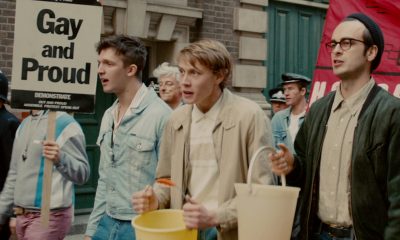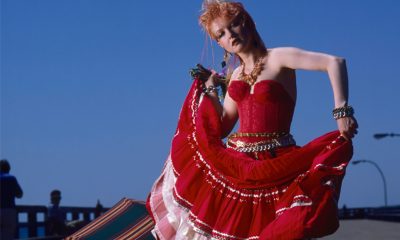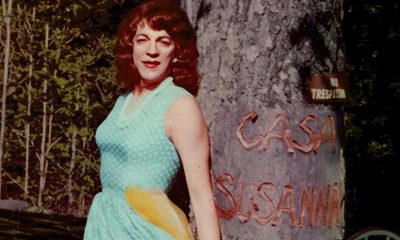a&e features
‘Better’ than ever: an interview with Harvey Fierstein
Beloved actor on pandemic, Broadway history and new biography
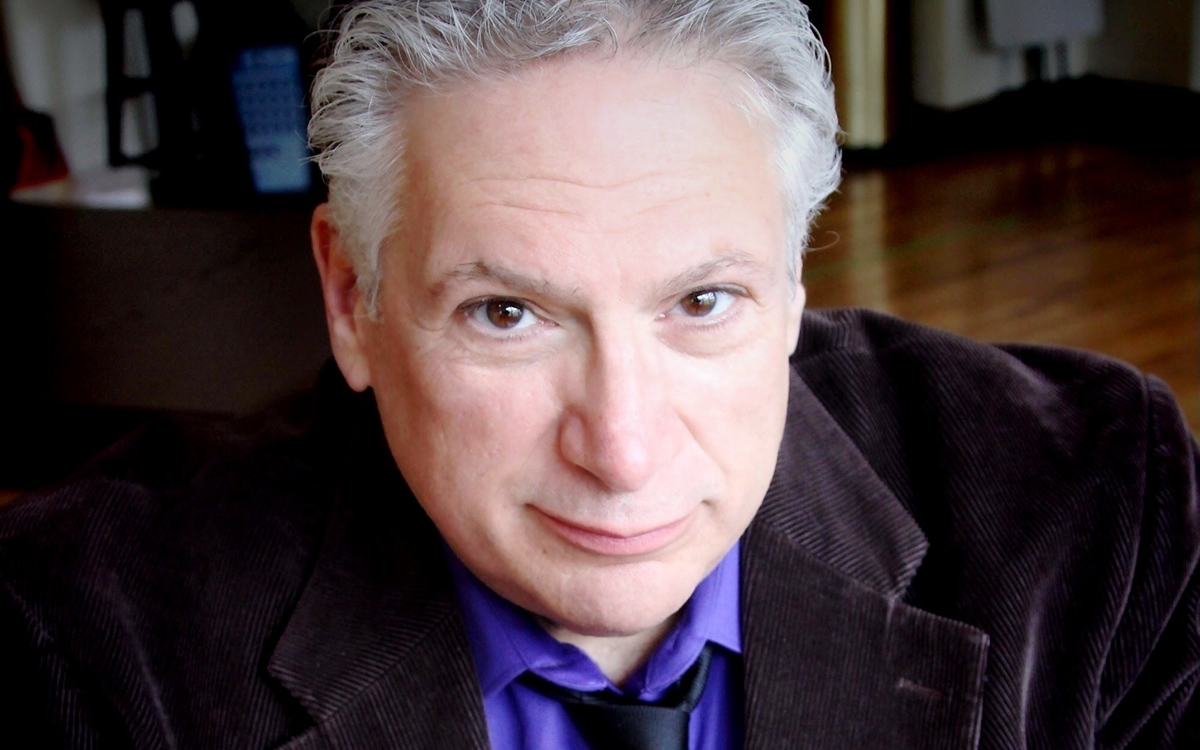
One of the best things about reading a memoir by someone with a distinctive voice – both spoken and written – is that you hear them as your read their book. Let’s face it, award-winning writer and actor Harvey Fierstein qualifies as someone who has a distinctive voice and while reading his revelatory memoir, “I Was Better Last Night” (Knopf, 2022), you’d swear he was in the room with you, dishing away. Harvey was gracious enough to make time for an interview shortly before the book’s March 2022 publication date.
BLADE: Harvey, why was now the time to write your memoir, “I Was Better Last Night,” and does having a milestone birthday (70) in 2022 have anything to do with it?
HARVEY FIERSTEIN: What’s really funny is that so many sources, if you look online, have my birthday as 1954, even though it’s actually 1952. The reason is that when I turned 22, my friend Eric Conklin, who directed the original production of “Torch Song,” said “You should tell everybody you’re turning 21.” I said, “Why?” He said, “Because if you lie when you’re older, nobody believes it. But if you start at 21, who the fuck’s going to care!” That year, I moved my birthday to ‘53. The next year, we decided we’d do it again. But I never took it seriously. Things just get picked up by this one or that one. I think it was in New York magazine that they got the facts wrong and said my parents were Eastern European immigrants. They were actually third-generation Americans. But it got picked up by everyone and everywhere it said I was the son of Eastern European immigrants. My mother was born in Brooklyn and my father was born in the Catskills. So, I wrote the book, and there’s a fact checker, of course. Every time I mentioned my age he sent back a note, “Wikipedia says you were born in ‘54. This one says you were born in ’54,” I had to keep saying, “Why would I lie and make myself older? I’d only make myself younger!” It’s another one of those examples of why you should never lie. I am indeed as old as the mountains. So, did I write the memoir because of the birthday? No. Like everybody else in the fucking world, this pandemic hit. I was a very good boy. I sat down and did all the work on my desk. At that time, we were supposed to be doing a production of “Bye Bye Birdie” at the Kennedy Center. I finished the rewrites on that. I had rewritten “Funny Girl,” which was done in London and then went on tour in England, and we were bringing it to Broadway. I wanted to make some more changes to it, so I got all those changes done. “Kinky Boots” was sold to cruise ships, so I had to do an adaptation, a shortening of the show, as I had already done for “Hairspray” and other shows. That was off my desk and done. I’m working on a new musical with Alan Menken and Jeff Feldman, the guys I wrote “Newsies” with.
BLADE: Yes, I read about that in the book.
FIERSTEIN: So, I was all caught up with that. Basically, I was done. Then I sat down and, as I say in the book, I make quilts. I owed a couple of quilts as gifts. I went down to my little sewing room and I made seven quilts in a row [laughs]. Usually, I turn out one a year. Everybody got their birthday quilts, their wedding quilts, whatever it was that was owed. I had cleared my desk and we were still in the pandemic. Then my agent said to me, “Why don’t you write your memoir?” I said, “Because I don’t write sentences.”
BLADE: You wrote the children’s book. That has sentences.
FIERSTEIN: But that’s kid sentences. I’ve written op-eds, but for that you just have to get the voice of Edward R. Murrow in your head or something like that. That’s like writing dialogue, as well. All of a sudden, you’re Aaron Sorkin. I thought, “What the fuck? I’ve got a computer. Let me try.” I wrote four chapters, and I sent them to my agent. She said, “This is great!” She sent the chapters out to I think nine publishers, and eight of the nine made offers.
BLADE: There are numerous powerful moments throughout the book. Without giving away too much…
FIERSTEIN: Oh, go ahead, give it away! I already know what happens.
BLADE: But I don’t want to spoil it for the readers.
FIERSTEIN: That’s right. Goddammit.
BLADE: Chapter 57 contains one of the most emotional sequences involving your parents. Would it be fair to say that writing the book was a cathartic experience?
FIERSTEIN: Yes, the whole thing really is. When I started, I asked Shirley MacLaine because she’s written 300 books about her 700 different lives. She said, “Write what you remember because your brain has a way of editing, and it will give you what you need for this book. You’ll remember things for other books and other things, but write what you remember and just be true to what comes up.” I said, “Even about other people?” She said, “Yes. When you’re writing about other people, you’re really writing about yourself. Just trust that.” That’s what I did. There were hundreds of stories that I could have told. I just tried to sort of follow a line of thought and let it be.
BLADE: That’s interesting because the chapters in “I Was Better Last Night” are presented in chronological order, beginning in 1959 and concluding in 2022. Is that how they were written?
FIERSTEIN Yes, I wrote it exactly as it is. As you say, that particular chapter, I knew was coming because I knew what happened to bring that memory back. I’m trying to say it as you said, to not give it away. What happened between me and my brother, when he sat down to watch the last revival of “Torch Song.” My editor was incredibly gentle with me. Now and then he’d say, add more here or there. But the only real note that I got from him was he wanted to move that story into chronological order since the rest of the book is. I said, “No. That’s in emotional order.”
BLADE: It needed to be where it was.
FIERSTEIN: Exactly! Most celebrity autobiographies begin “I was a kid and I saw a show and I said, ‘I wanna be a star, too!’” Which is obviously not my story. I never wanted to be in show business. I didn’t want to be a writer. I didn’t want to be an actor or a drag performer. It was not my dream at all. That’s why it was so important to do it chronologically. I wanted to show how I lived my life being true to the moment I was in.
BLADE: In “I Was Better Last Night” you take readers on a journey through modern theater, from The Gallery Players and La Mama to off-Broadway and Broadway. With that in mind, would you agree that in addition to being a memoir, the book also functions as a theater history lesson?
FIERSTEIN: I guess it does. I have certainly been told that by a bunch of people who’ve read the book. When I was talking to Patti LuPone about it, she said, “Geez, I wish I had done what you did. She came through theater school and right into the legitimate, not through the experimental. As I say in the book, I came from an art school, so I always approached it as an art. Theater was part of an art movement, and I got involved because I wanted to meet Andy Warhol. Little did I know they would put me in drag. I guess there is a history there. Certainly, when I look around me, and I look at the people that I grew up with – Kathleen Chalfant and Obba Babatundé — and, of course, La Mama became something bigger. There were lots of others. Meeting Matthew (Broderick) at 18, or Estelle Getty who was a housewife from Bayside, Queens. She wouldn’t even admit she was from Bayside. She told everybody she was from Long Island [big laugh]. I said, “Estelle! Bayside is in Queens. Shut up!” What is history? After all, history is just day after day after day after day. I did start, as a baby, in this experimental theater. I wish that experimental theater still really existed. There were a few of us that I would say destroyed off-off-Broadway. I think greed is what destroyed off-off-Broadway. I think what happened was when people saw Tom O’Horgan make it, when “Hair” became a hit, that had a lot of people going, “Where’s my ‘Hair’?”
BLADE: But don’t you think that experimental theater might exist in cities where it’s a little more affordable to do that kind of thing? Say, Austin, Texas.
FIERSTEIN: There will always be experimental theater. It’s just, how is it looked at? Is the government funding there for it? I hear a lot of people saying, “Let’s not waste money on theater.” “Torch Song Trilogy” wouldn’t have been what it was if not for a government grant. I don’t know if you know this, but I just gave a grant to the New York Public Library at Lincoln Center to build a theater laboratory because rehearsal space is incredibly expensive in New York and almost impossible to find. David Rockwell is designing it and I’m hoping it’ll be open in two years. I tell a story in the book about how years ago we were rehearsing up at the YMCA, and the director just disappeared and left us with the bill for the rehearsal room. If I can leave a rehearsal room behind… Lin-Manuel (Miranda) developed “Hamilton” in the basement of the Drama Book Shop. For my shows, I used the basement of La Mama which was this small space, but big enough for us to rehearse and develop what we needed to do. I even did a couple of shows down there.
BLADE: Chapters 19 through 22 give readers insight into the inspiration for and the writing of “Torch Song Trilogy” and then much later you write about the recent revival with Michael Urie. What was it like to revisit the creation and the revision of “Torch Song Trilogy?”
FIERSTEIN: They’re your children, so they never really leave you. You may not think about them in the same way all the time, but they don’t leave you. You ask a mother about her son when he was six, and she can tell you a story about that time. It doesn’t mean you live with those stories every day. But they’re always there. Unfortunately, as you get older and people die on you, you remember them, or you go back to those stories time and again to remember how you all met and all that. With something like Torch Song, which is so much a part of my life, there was no real shock to going back and looking at that stuff again. Seeing Michael do it was not a shock either, because I cast all of my understudies. The show ran on Broadway for five years, but I didn’t play it all five years. There were other Arnolds and I saw all of them. There were matinee Arnolds, and then we had a bus and truck tour, and a regular tour. I saw all of those guys play it. I saw it in London with Tony Sher, who died a few weeks ago. He won the Olivier for “Torch Song.” Writing a memoir is not a time to blame other people [laughs]. When you’re writing plays, it is.
BLADE: I’m so glad you said that because one of the things that I think will strike readers about “I Was Better Last Night” is the brutal honesty with which you write about alcoholism and sobriety, as well as your suicide attempt. What do you hope readers will take away from that?
FIERSTEIN: There’s a certain point when you’re writing something like that…I don’t really care [laughs]. I needed to tell the truth and you hope that the truth will do good. When you’re writing fiction, you care more about how it’s read and what somebody gets out of the fiction. When you’re writing non-fiction, it’s like, “This is what happened, like it or not, Cookie.” The only hope is that I hope you know I’m telling it the best I can and being truthful. Because the truth does affect people, that I know. When you’re writing drama, you are manipulating an audience, and a story, and emotions. When I was writing the book, of course, there’s still an art to it, but I’m not turning away from something because it’s not comfortable. I’m going to say it. If somebody thinks I’m an asshole, let them think I’m an asshole. You read the book, and thank you very much for doing so.
BLADE: That’s my job!
FIERSTEIN: You see in the book that I don’t have an answer for my own gender. Had I been born in 1980, instead of 1952, would I be a woman now? I don’t know. I don’t have those answers. I don’t have the luxury of being born in a different society. The first (trans) person I knew was Christine Jorgensen, who died owing me money, that bitch [laughs]. When I was writing the book, I was going through photographs. There’s a picture in the book of me and Marsha P. Johnson and Jon Jon marching in a Gay Pride march. I put that picture up and somebody wrote to me telling me about Marsha, like you should know who this person was. I was like, “What are you talking about? This was a friend of mine!”
BLADE: Thank you for mentioning pictures. I live four blocks south of Wilton Manors in Fort Lauderdale. In the book you include a photo of the WiltonArt.com street sign that features a quote by you. What does it mean to you to be immortalized in this way?
FIERSTEIN: While it’s very flattering, another place I looked had it that Walt Whitman said it! With one hand, you’re flattered, and with the other, you’re slapped across the face.
BLADE: At least they got the attribution right in Wilton Manors.
FIERSTEIN: That’s lovely, it really is lovely. It’s a lovely thing to see something link that. I was watching some interview with Billy Porter and as if by accident, they walked down the block where there was a mural on the side of a building of his portrait. As if, “Oh, I didn’t know that was there!” You sort of laugh, like, yeah, right! You brought a film crew because you didn’t know your picture was there on the wall [laughs]. That sort of stuff of celebrity is always funny. Especially when you have friends who are famous and you try to just be human beings together, but then you go out in public, and you realize that they mean a whole other thing to the public than to you.
a&e features
“I should have been there”: A queer Korean adoptee finds healing with original family members
‘Between Goodbyes’ director Jota Mun talks about their filmmaking ethos behind this layered, moving portrait, now streaming on PBS.
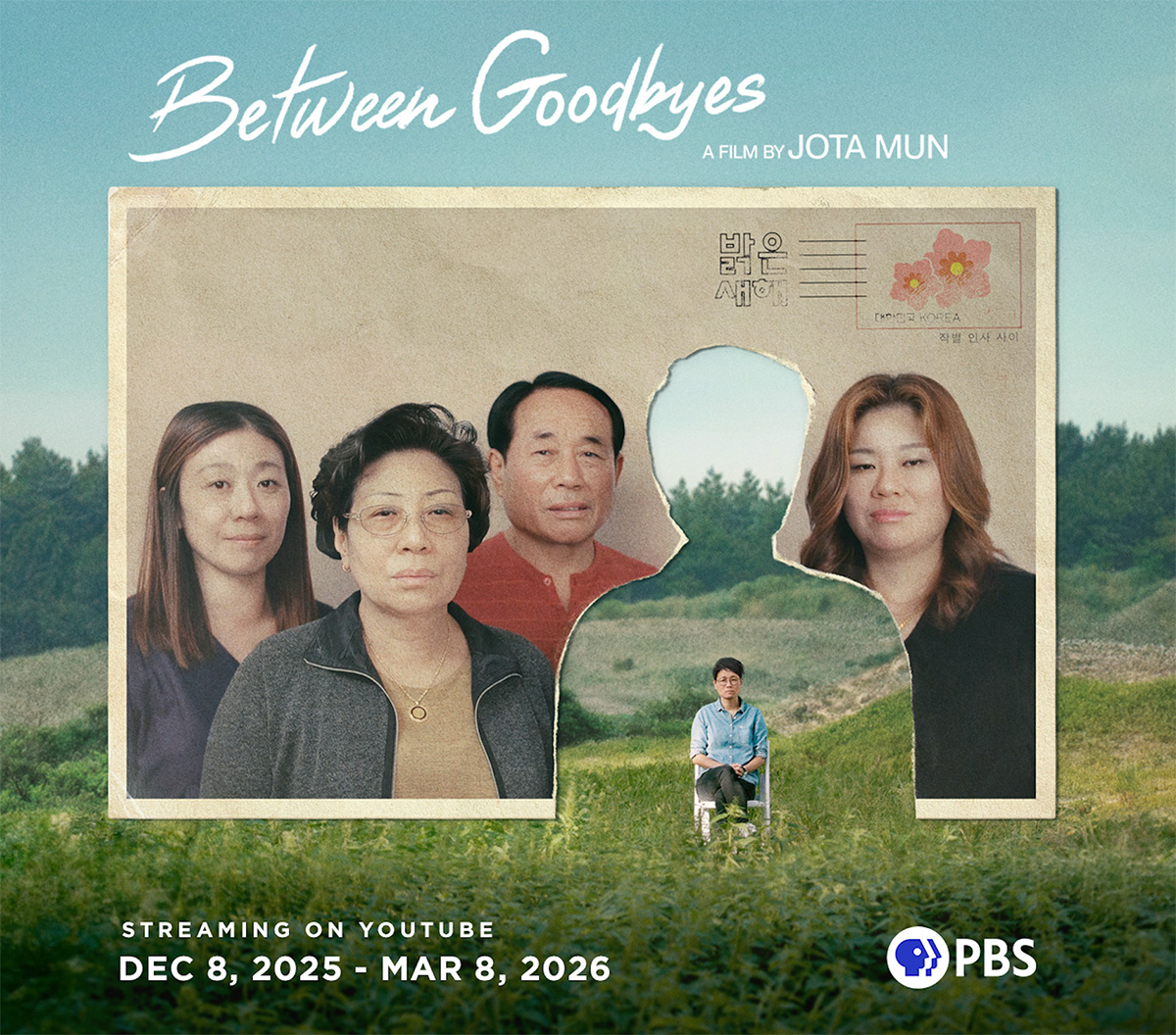
What does longing for your child look like? What happens when they resurface in front of you, when that rift was once an immeasurable open sea — a searing pain that silently hollowed you out for decades? For the child wrenched away by circumstance and thrown into the purgatory of always feeling in-between: in between home, in between being a whole person, in between who you could have been and who you are now — what does it mean to become and belong?
In filmmaker Jota Mun’s documentary Between Goodbyes, the fragmented yearning for home, family and identity are woven together into a tremendous and at times dream-like contemplation of the self, focused on various family members set adrift by a deceitful international adoption machine.
The story is focused on Mieke Murkes, a queer Korean adoptee who grew up in the rural village of Vaassen in the Netherlands. Shortly after her birth in 1982, she was raised by Willy, a devout evangelical Christian woman. But the story does not begin with Mieke in Vaassen. It begins with Okgyun, her original mother, walking through an ephemeral meadow as she makes her way to a shoreline. This is our first point of loss.
It is important to understand how the stories of Okgyun and Mieke exist. In Between Goodbyes, we see a frustrating glimpse into the cultural and political forces that created this separation. Since 1955, 200,000 children have been adopted from South Korea, and just three years ago, several of these adoptees found that their documents had been falsified. Murkes would sift through her own papers in Between Goodbyes, noting their dull and rote descriptions of her physical appearance and health. “The paperwork is as if you’re buying a new car,” Murkes says.
Written nearby: “Both parents are unknown,” a falsehood that leaves the family breathless. It is a gut punch.
This March, a South Korean governmental agency admitted that it had violated the rights of adoptees, but an investigation that began in 2022 at the behest of over 350 Korean adoptees has been halted. Whether or not retribution can ever be paid is up in the air, but the reeling grief and complicated self-reckoning many of these adoptees and their families face are rendered and expressed with deep tenderness in Mun’s documentary. “I did not know how to fit the Korean part of me in there,” Murkes said.
When Okgyun was pregnant with Mieke, she was also raising three other daughters: Mijin, Mikyung and Taekyung. The population was booming, and mothers like herself were being shamed for continuing to have children. Considering abortion, Okgyun recounts a midwife who convinced her not to go through with it — that if the child were a boy, she should keep him. If it turned out to be a girl, she could give her away to live “a good life” in the U.S. “Men are always positioned above women,” Okgyun said. “I always hated that.”
After Mieke was born, Okgyun’s mother-in-law told her to give her away. “She was gone before I saw her face,” Okgyun said. “I let her go.” Her guilt tightens her throat, trembles in her voice. “I dreamed of Mieke a lot. I can’t tell you how many times,” Okgyun said. “Dreaming and forgetting, dreaming and forgetting. The thought that kept me going is that one day I can find Mieke.”
What ensued was a several years-long search. Kwangho, Mieke’s original father, pleaded with an adoption agency for any leads about Mieke. They denied him several times and his desperation only grew. “I had to find her to be at peace before I die,” he said.
Meanwhile, Mieke’s own grief and confusion were compounding. When she was beginning to discover her queerness, she was deeply ingrained in local religious spaces. What made her feel free, the church treated as an aberration — as behavior that resulted from loss.
When she would eventually meet her original family, they, too, had trouble processing her queer identity and masculine presentation. To them, queerness was “acquired” from being raised in a foreign land. With time, they grew to embrace Mieke and her partner, Marit, even as misunderstandings arose. Of this, Mieke’s conflictedness is explored. Gay rights are more advanced and accepted in the Netherlands than in South Korea, but this does not mean contending with her queerness would have been easy with her adoptive mother, Willy. “It probably would have disappointed her a lot,” Mieke tearfully revealed.
Mieke’s stepping in between knowing and unknowing is reminiscent of Okgyun’s dreaming and forgetting — their grief and confusion move within them, replicating themselves over and over again. Between Goodbyes dives deeply into this in order to offer a portrait of healing: of its complications and the necessity of community support to achieve this.
Mun discusses the film with the Blade, diving into how reunification between adoptees and original family members is, in many ways, made nearly impossible by factors like language and cultural barriers enforced and held tightly in place by the international adoption system. This film illustrates a break in this narrative and the mighty efforts behind it all.
A broadcast version of Between Goodbyes is now available to stream on PBS. See below for more information.
Can you tell me about the inception of making Between Goodbyes? Have you always wanted to tell a story about international Korean adoption from a queer perspective?
As a queer Korean adoptee myself, [there are] so many intersections that I haven’t quite seen on screen before. So I was always really excited about making something about my community. And then I’d say, in 2017, is around when I started getting closer to zeroing in on the idea. I think part of it was through befriending Mieke and hearing her parents’ story. Hearing about their efforts really blew my mind.
So much of the standard narrative is that adoptees initiate the search. So even before meeting [Okgyun and Kwangho], it just felt like it spoke so loudly of not only their character, but a piece of the puzzle that I had never considered — that they could be longing for us. And I think as an adoptee, you always wonder what [your original parents] would think. So it’s very noticeable that we almost don’t ever hear from them directly. Even in narrative stories of adoption, they’re usually deleted, or they’re written in a really flat way that feels like they’re serving the plot. I’ve never seen a depiction of birth mothers in particular who are questioning their own circumstances or feel angry about it.
There’s a lot of nuance given to all of the different people that we see in the story. The pain is layered and deep, and we don’t just view it from one perspective. What was it like having to portray this hurt, when many adoption stories typically focus solely on the adoptee’s emotional and personal journey?
It’s so unique through each lens, even though it’s the same pain. Like her sisters — of course, it’s going to affect them. Even if she never said anything, they must have felt it. It just ripples out to everyone and keeps expanding.
Originally, it was focused on Mieke, because that’s who I had the most access to, and she’s the closest to me in terms of general identity markers. So in my mind, I felt more confident that I could tell her story in a nuanced way. But what about Okgyun? I was hitting a similar barrier of communication that Mieke had hit. That’s part of why our main producer, Zoe Sua Cho, was so essential in conveying more about Okygun and the original family’s side of the story.
When I was in the early stages of developing the film, there was a quote that I felt was really inspirational: “In our hurting, we did not realize that we were stolen from each other” (by SN Désirée Cha from Outsiders Within Writing on Transracial Adoption). The same quote came back to me in the edit and helped us find a narrative structure that went beyond just one person’s perspective.
What if the main character is the collective trauma, a singular event that causes the family to splinter and suffer across decades? I wanted to explore how tempting it is in these moments of righteous anger at systemic problems to end up fighting with each other. I feel like they both had to mourn something that was so much bigger than any one family. Mieke’s adoption affected so many people that I almost wanted that to be the main character. How do we not get lost in that pain and still try to come back together? It’s too much to carry alone.
So the main character is not necessarily one person, but the issue that you’re trying to tackle throughout the story. It also makes me think about how the documentary itself, or the making of it, also participates in this community healing that I feel like was the focus of Between Goodbyes.
I hope it’s an important layer. Suffice to say I think I always deflect to name a singular main character. I wanted to show everyone’s point of view while of course highlighting especially Okgyun and Mieke.
What else can you share about your approach to filmmaking?
You know, I was on this wonderful panel earlier this year, hosted by A-DOC, and I kind of surprised myself in preparing for it. I realized, actually, I have a lot of strong beliefs on filmmaking ethics that I hope come through in the film. For example, I reject the genius artist myth. The fantasy that if an artist is talented enough, they get permission to treat everyone around them terribly. That exploitation and squeezing things out of people is the best way to make great art.
Instead, I want to believe that the sensitivity, the care, and emotional work I poured in is going to come shining through in the film. And I do think that’s part of why we witnessed so many intensely vulnerable moments that I couldn’t have predicted.
This emotional connection to the film is also, visually, represented in artistic and inventive ways. There are sequences interspersed throughout that feel dream-like and cinematic. Creatively, what was it like to structure and craft how you wanted those scenes to be, the weight that they carried, and why you wanted to represent them in that way?
Aw, thanks for saying so! I was clear from the beginning that I wanted certain moments in the film to look as cinematic and epically life-changing as they feel in real life. Because visually, sometimes these moments of heartbreak can look rather dull. The deep heartbreak of a farewell at the airport. What does it look like? It looks like two people hugging in a very normal-looking terminal. But that’s not what it feels like. It feels larger than life. So to me, every single one of the art [scenes] has a very literal symbolism in my mind.
I really enjoy the complexity given to the family, both through the artistic symbolism and through the different angles we get to view them in. When it comes to Mieke’s queer identity, there are varying levels of acceptance and also tension that co-exist. One of her sisters, Mikyung, skirts around terms and labels, instead saying Mieke is “like that,” and “I don’t know anyone like that.” There was this feeling that queerness is learned or acquired elsewhere — that Mieke “wouldn’t have turned out like that” if she had grown up with her original family in Korea.
I can’t be sure what they were implying but you know, I definitely didn’t want to fall into a common trope of seeing Western values as being so liberal and accepting and framing all other cultures as homophobic. I want to be clear that there is a queer community in Seoul. It’s not the same as Amsterdam, of course, but it does exist.
That’s part of why it was important for me to include Mieke mentioned what she thinks her Dutch mom would have thought — just to clarify that homophobes are everywhere. There are plenty of them here in the West as well. Mieke’s Dutch parents were Evangelist Christians. So it’s not like everyone in the West is free to be a lesbian, you know?
Another moment that struck me in the film was a moment where we, as the audience, get to see you clearly. In this scene, we see you and Mieke on a rooftop, and you’re consoling her as she’s trying to prepare for a difficult conversation with her original mother, Okgyun. Did you have to find a balance in terms of being the director of this film and being Mieke’s friend?
It was really important to me to show friendship and how much that can help you along the journey. You think that for her to emotionally process things, it would have to be with her mom. But that rooftop conversation felt so transformative in itself. And then what ended up being the kind of mirror scene to that was Okgyun talking to Ruth [a fellow original mother]. She needed a buddy, too. How many times in life are we like: The opposing party doesn’t need to get it, but if my friend just could — that would give me so much relief and patience to enter the actual conversation with the person I’m upset with.
Being so personally close to Mieke and her family meant that my film was about all people I loved and cared about. I think the documentary field comes from such a long history of an anthropological approach. It’s like, “I’ve helicoptered in, and I just met you, but I’m the expert artist.” I wish the ethos were the opposite; we need to care about everyone, from the participants to the crew. I don’t want the blood, sweat, and tears to come through on the screen. I hope that watching it makes people feel cloaked in tenderness and care.
I was so worried about everyone, probably too much. It’s such a weird thing to ask people to do, to be in a film, so I took that with a lot of responsibility. Be aware of the impact you’re having. I am having an effect on this family’s life. I almost wanted to be like: “Forget my art project.” This is about the rest of their lives as a family, and that’s more important. So it became a light on my path, trying to make decisions as best I could to have a positive impact on their relationship.
It almost made me question my ethics in a different direction. “Am I intervening too much?” And that’s a strange thing: I have to admit I exist. I’m not a fly on the wall. And I think that’s why the conversation on the roof was really the most vulnerable for me, because I was showing myself. I’ve actually been here the whole time, cheering them on or trying to diffuse tension. I set out to make a film about how hard it is to stay in reunion, but now I’ve realized I’ll be heartbroken if their reunion doesn’t last. So in many ways the film was really just a vehicle for my attempt at keeping us all connected across so many distances, and that’s my own emotional journey or connection to their story.
Mun plans to release the full-length film in 2026, along with deleted scenes and additional footage. Up-to-date information can be found on the film’s Instagram page.
Kristie Song is a California Local News Fellow placed with the Los Angeles Blade. The California Local News Fellowship is a state-funded initiative to support and strengthen local news reporting. Learn more about it at fellowships.journalism.berkeley.edu/cafellows.
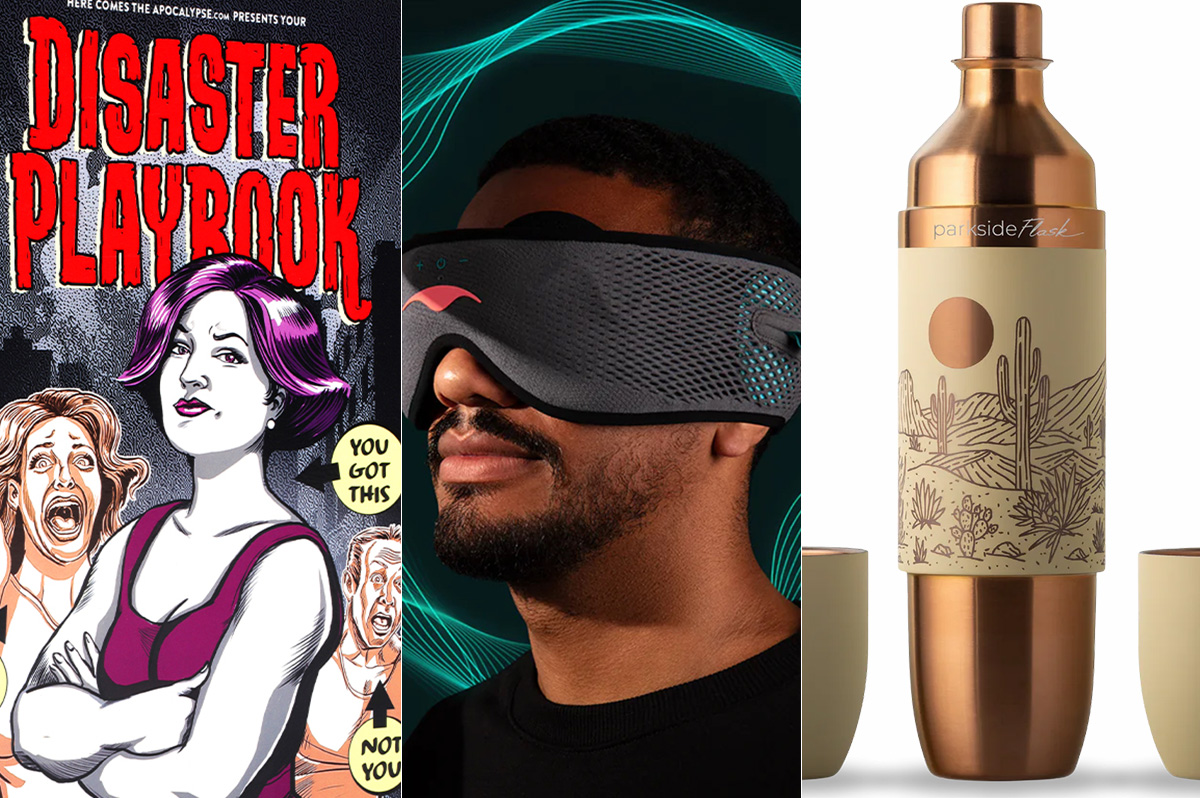
Some gifts scream practical, others whisper luxury, and a few flat-out blur the lines. From cocoa that feels ceremonial to a cologne that linger like a suggestive smirk, this year’s ultimate gift picks prove that thoughtful (and occasionally naughty) presents don’t have to be prosaic. Welcome to your holiday cheat sheet for festive tangibles that get noticed, remembered, and maybe even result in a peck of gratitude planted under the mistletoe. Consensually, of course.
Amber Glass Champagne Flutes
Pop the champs – but make it vintage. These tulip-shaped stunners in amber-tinted glass bring all the Gatsby vibes without the Jazz-age drama. Whether you’re toasting a milestone or celebrating a Tuesday, their seven-ounce capacities and hand-wash-only care make ‘em as practical as they are pretty. Pair with a thoughtful bottle of bubs and gift with a glittering wink. $18, NantucketLooms.com
Disaster Playbook by Here Comes the Apocalypse
Because the end of the world shouldn’t be a solo act, this spiral-bound guide is your step-by-step roadmap to surviving and thriving when everything else goes sideways, which might be sooner than you think. Packed with checklists, drills, and a healthy dose of humor, it’s like a survival manual written by your most prepared (and slightly snarky) friend. Whether you’re prepping for a zombie apocalypse or, more realistically, REVOLUTION!, this playbook’s got your back. $40, HereComesTheApocalypse.com
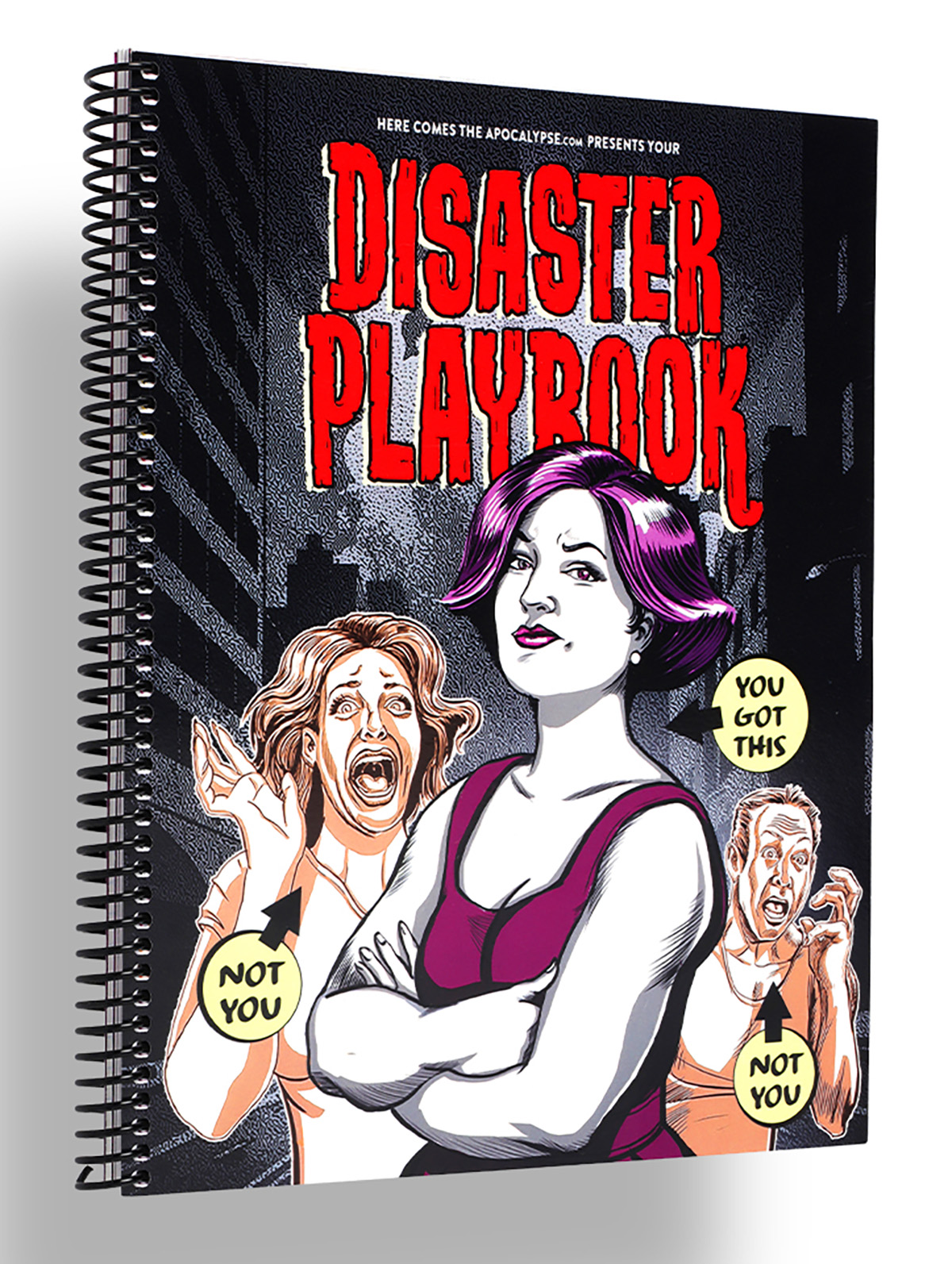
Wickless Vulva Candles
Bold, luxurious, and completely flame-free, CTOAN’s wickless candles melt from beneath on a warmer, releasing subtle, sophisticated fragrances, like sandalwood or lavender. The vulva-shaped wax adds a playful, provocative element to any space –perfect for a bedroom, living room, or anywhere you want elegance with an edge. A gift that celebrates form, intimacy and self-expression, no fire required. $39, CTOANCO.com
Villeroy & Boch Royal Classic Christmas Collection
Every meal is a mini celebration – with whimsy at every place setting – in Villeroy & Boch’s Royal Classic festive dinnerware collection that hits all the right notes. Made from premium German porcelain, it features nostalgic little toys, nutcrackers, and rocking horses in delicate relief, giving your holiday spread a playful but refined twist. Dishwasher- and microwave-safe, it’s luxe without the fuss. Gift a piece to a special someone, or start a collection they’ll use (and show off) for years to come. $22-$363, Villeroy-Boch.com
Greenworks Electric Lawnmower
You a ’hood queen who considers lawn care performance art – or just wants to rule the cul-de-sac in quiet, emission-free glory? Greenworks’ zero-turn electric mower has the muscle of a 24-horsepower gas engine but none of the fumes, drama or maintenance. Six 60V batteries and a 42-inch deck mean you can mow up to two-and-a-half acres on a single charge – then plug in, recharge, and ride again. It’s whisper-quiet, slope-ready, and smooth enough to make you wonder why you ever pushed anything besides your queer agenda. The perfect gift for the homeowner who loves sustainability, symmetry, and showing off their freshly striped yard like that fresh fade you get on Fridays. $5,000, GreenworksTools.com
Molekule Air Purifier
For the friend who treats their space like a sanctuary (or just can’t stand sneezes), the Molekule Air Pro is magic in motion. Covering up to 1,000 square feet, it doesn’t just capture allergens, VOCs, and smoke – it destroys them, leaving your air feeling luxury-clean. FDA-cleared as a Class II medical device, it’s serious science disguised as modern design. Gift it to your city-dwelling, pet-loving, candle-burning friend who likes their living room as pristine as their Instagram feed. $1,015, Molekule.com
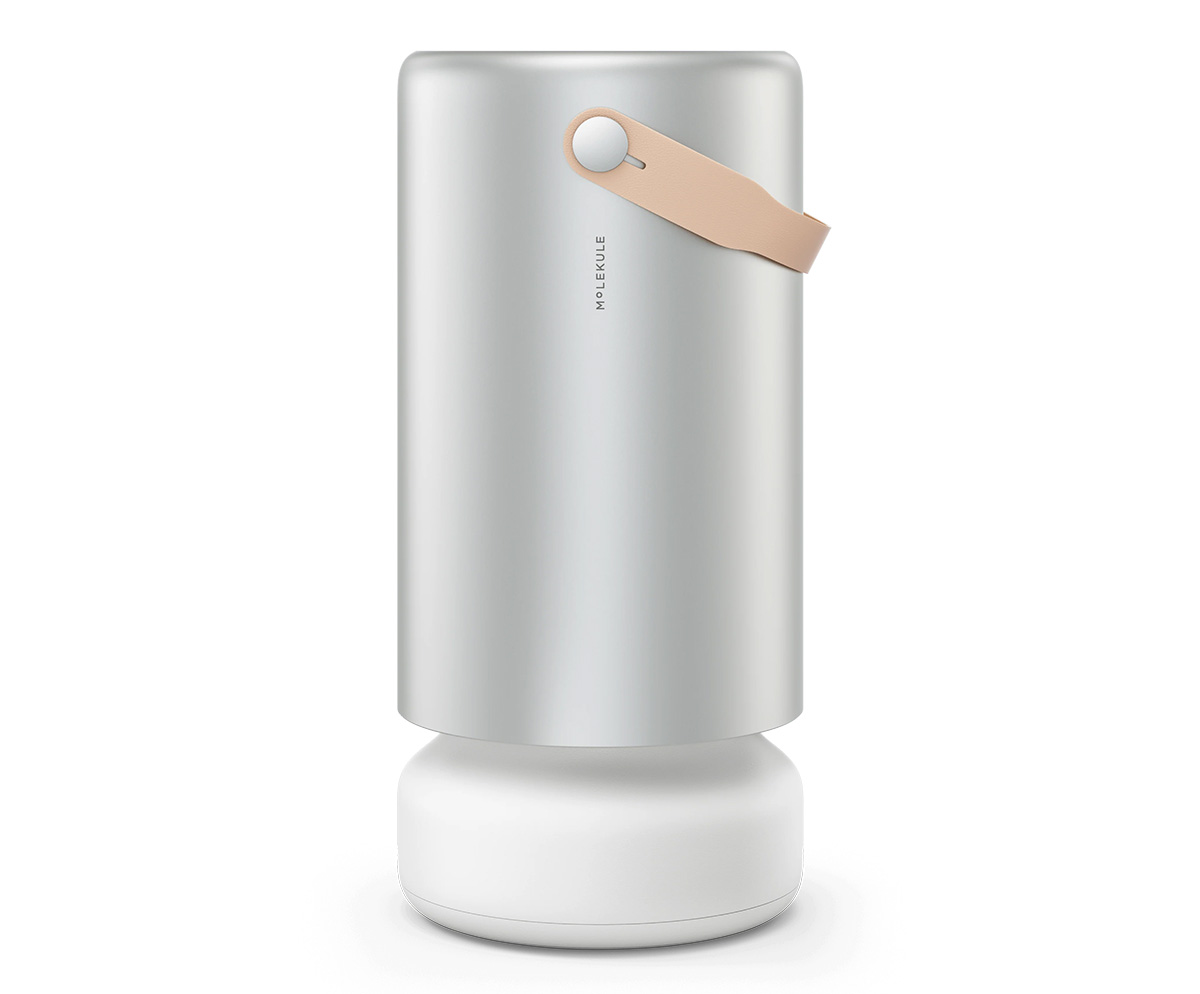
Cipriani Prosecco Gift Set
Effervescent with stone-fruit sweetness and a touch of Italian flair, the Cipriani Bellini & Prosecco gift set brings brunch-level glamour to any day of the week. The Bellini blends rich white-peach purée with sparkling wine, while the dry ’secco keeps things crisp and celebratory. Pop a bottle, pour a flute, and suddenly winter weeknights feel like a party – even with your pants off. $36, TotalWine.com
Woo(e)d Cologne
British GQ recently crowned Woo(e)d by ALTAIA the “Best Date Night Fragrance,” and honestly, they nailed it. Confident without being cocky – smoky gaïac and Atlas cedarwood grounds the room while supple leather and spicy cardamom do all the flirting – it’s a scent that lingers like good conversation and soft candlelight. Gift it to the one who always turns heads – or keep it for yourself and let them come to (and then on) you. $255, BeautyHabit.com
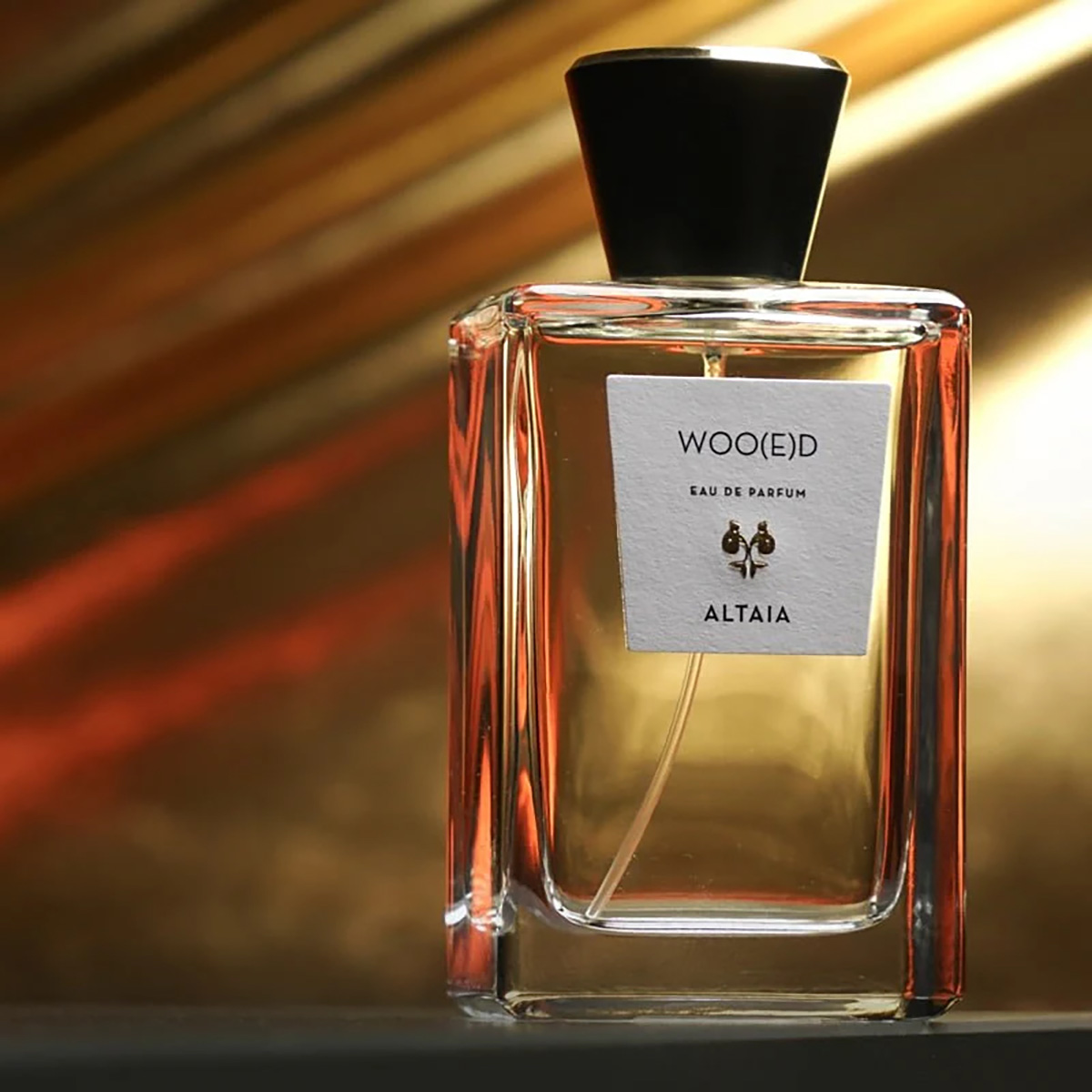
Lococo Cocoa Kit
Keep the run-of-the-mill mugs in the cabinet this Christmas and pull out Lococo’s handcrafted Oaxacan versions that demand you slow down and sip like it matters. Paired with a wooden scoop, rechargeable frother, and Lococo’s signature spice hot-chocolate blend (vegan, gluten-free, with adaptogenic mushrooms), this holiday kit turns Mexi-cocoa into a mini ritual you’ll look forward to. Perfect for anyone who loves a little indulgence with a side of ¡A huevo! energy.
Manta Sleep Mask
Total blackout, zero pressure on the eyes, and Bluetooth speakers built right into the straps, this ain’t your mama’s sleep mask — but it could be. The Manta SOUND sleep mask features C-shaped eye cups that block every hint of light while ultra-thin speakers deliver your favorite white noise, meditation, or late-night playlist straight to your ears. With 24-hour battery life, breathable fabric, and easy-to-adjust sound, it turns any bed (or airplane seat)

Shacklelock Necklace
Turn the industrial-chic vibe of a shackle into a sleek statement. Mi Tesoro’s platinum-plated stainless-steel necklace sits on an 18-inch wheat chain, featuring a shackle-style latch pendant that’s waterproof, tarnish-free, and totally fuss-les. Beyond style, it nods to a classic gesture in the queer leather community: replacing a traditional Master lock with something elegant to quietly signal belonging to someone special. Wear it solo for a minimalist edge or layer it like you mean it; either way this piece locks in both your look and your intentions. $90, MiTesoroJewelry.com
Parkside Flask Mojave Edition
Wine nights get a desert glow-up with Parkside’s limited-edition 750-milliliter all-in-one flask draped in sun-washed bronze and badland hues like sage, sand, and terracotta – with magnetic stemless tumblers that snap on for effortless shareability. It keeps your vino chilled for 24 hours, pours without drips (no tears for spilled rosé, please), and even let
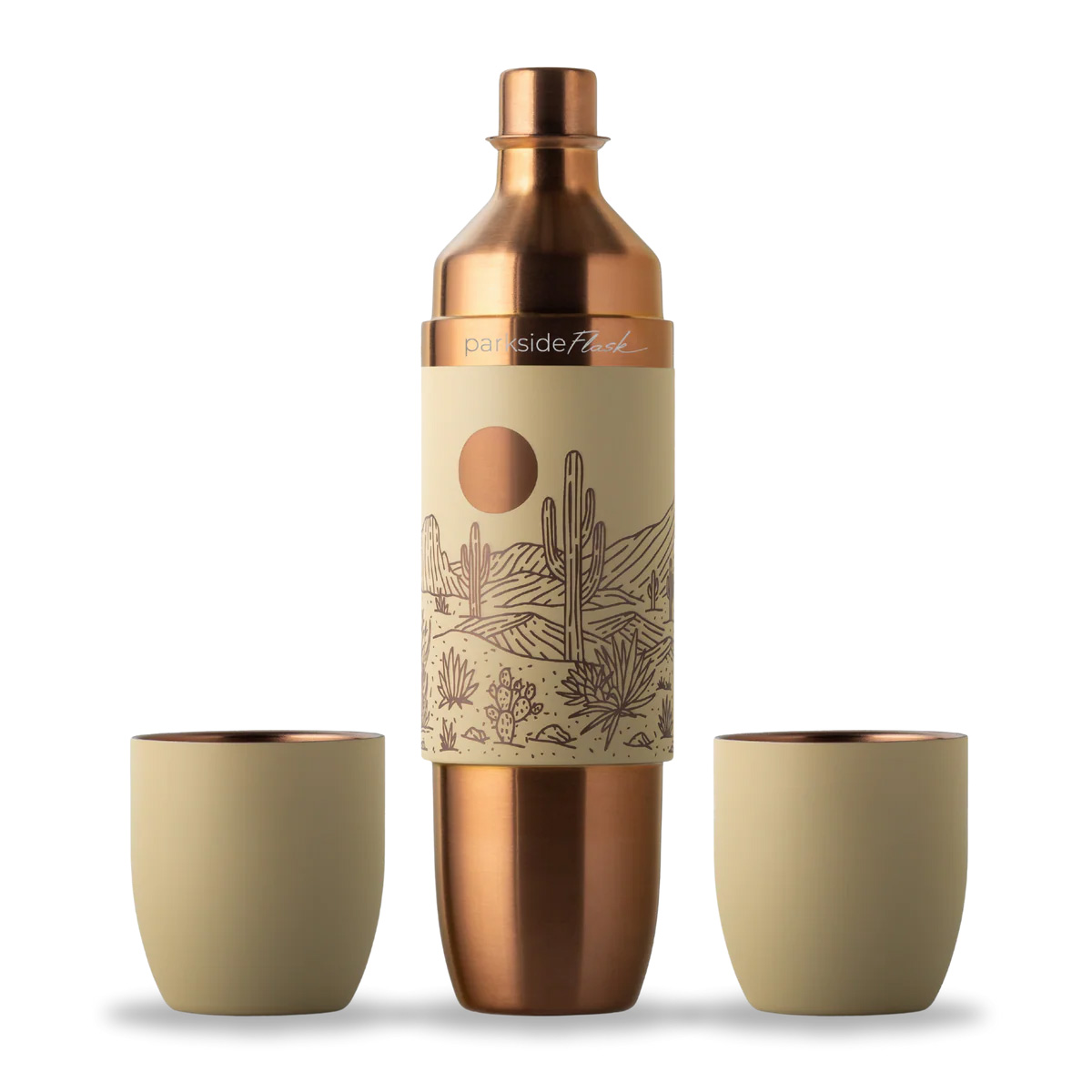
Mikey Rox is an award-winning journalist and LGBT lifestyle expert whose work has published in more than 100 outlets across the world. Connect with him on Instagram @mikeyroxtravels.
a&e features
Drag queen Kennedy Davenport dishes on her new comedy special
The RuPaul’s Drag Race alumni on The Kennedy Davenport Center Honors and how she chooses to stay positive amidst so much hate.

While RuPaul’s Drag Race is filled with legendary queens, few have had as much of a cultural impact as Dallas’ very own Kennedy Davenport. Originally from this seminal program’s seventh season, the performer became an instant fan-favorite with her endless stream of quotable catchphrases and jaw-dropping dance ability. With follow-up appearances on All Stars and Versus The World, Kennedy has solidified herself as one of the biggest icons to come from this franchise. And, finally, World of Wonder is giving her the solo spotlight she deserves with a new special, unlike anything the production company has done before: The Kennedy Davenport Center Honors.
“It’s different, and that’s why I wanted to do it!” Said Davenport, when she sat down with the Los Angeles Blade to discuss what drew her to this new special. “I’m a host by nature — and coming up in the Drag Community, you have to know how to hold a mic.”
The Kennedy Davenport Center Honors will see the queen bestow awards — or, as she calls them, ‘dishonors’ — to various Drag Race alumni. From “Proud Drag Mother Award – When Your Daughter Has A Higher Booking Fee” to “The Struggle is Real Award,” Kennedy was excited to share the stage with some of her favorite Drag sisters and completely gag them with these hilarious new titles. Whether it be recent icon Bosco or long-lasting legends like Alexis Mateo, she assures everyone reading that this VIP list will be one of WowPresentsPlus’ most stacked yet. But beyond the comically star-studded glamour, Kennedy knew that she wanted her first special to be something more than just an award show. She wanted to use this time to uplift and celebrate the Drag community that she loves so much — a practice that queer people have been missing in recent months, but that this Queen does in her life every single day.
“[I’m positive] on a daily basis,” Kennedy explained, when discussing the optimistic attitude she embodies as a host. “I always highlight positivity. And, you know, it’s cliché to say…but I really don’t think about the negative. In my life, or in my career.” It’s a part of the performer that fans don’t often get to see; between the verbal takedowns and stunning lip-syncs, Drag Race watchers can miss how Kennedy is constantly supporting everyone around her.
When discussing how she manages to stay so hopeful, especially when coming from a state filled with anti-LGBTQ+ rhetoric, Kennedy clarified, “It’s a very conscious thing. You have to be aware of what you are putting into the universe, and what you are allowing into your personal space.” She continued, “It’s easy for me to do [this] because I’ve been down at the bottom [of life]. I’ve [also] been at the top, but the bottom is where you really start learning life and start making up your mind about wanting to live positively.”
“I’m going to see my dream, I’m going to see my purpose. I’m going to encourage others and motivate them to be their authentic selves — and I’m going to respect myself along the way so that I can continue to be respected and loved by [everyone around me.]” It’s a radically optimistic mindset that audiences don’t often get to see through the television screen. And it’s one that Kennedy knows her fans can benefit from, now more than ever.
During a time when LGBTQ+ communities — especially drag queens, who are go-to scapegoats for conservative fearmongers — are being attacked at a daunting scale, it’s becoming harder and harder to find moments of pure queer joy in America. It’s understandable that so many are focused on pushing for change in all arenas of this country, but we can’t forget how essential community is in the ongoing fight for liberation. It’s good to remember that in the face of discriminatory rhetoric, LGBTQ+ joy is a radical act, which is why Kennedy is hoping that this special will give viewers something they haven’t had in far too long: a moment to relax.
“It’s all [done] in love, and that’s the message that I really want people to see, that,” said Davenport, when discussing how excited she is to not only poke fun at her fellow performers, but spotlight their many accomplishments. “It’s a ‘dishonors,’ but we all love them, and everybody that I call out [in the special] knows that it’s done in love.” By bringing viewers into her close relationships with everyone involved, Kennedy is inviting them to laugh at the inside jokes she’s developed over years of knowing these stars. It’s the most exciting part of the entire endeavor for the Queen, saying, “I’ve always lived with the heart of love and laughter. So, to have this platform, to be able to spread love…it’s a blessing in disguise.” This interview quickly turned from a spotlight on a funny special into a profile on a Drag Queen who has helped so many over the years. It’s all a part of Kennedy Davenport’s ongoing mission to spread her personal mindset of love and life to everyone she meets, with The Kennedy Davenport Center Honors becoming her latest and biggest attempt at uplifting the many people in her community. This is why, as the interview came to an end, Kennedy clarified her true goal with this special: “At the end of the day, I just want you to be sitting back laughing and saying, ‘That made me sick!’ She talked about me, and I loved it.”
The Kennedy Davenport Center Honors premieres December 7th on WOW Presents Plus
a&e features
Exploring a different side of Los Angeles influencer Javonte Rose
This author, advocate, and model discusses the hard journey that brought him where he is today.

While online followers will think many things when they first lay their eyes on Javonte Rose, there’s one word that will come to many of their minds: perfection.
This LA-based model and musician has spent the last few years occupying people’s timelines with a perfectly curated social media presence. It’s what led to his casting on hit queer web series like WowPresentsPlus’ Vanjie: 24 Hours of Love, where fans came to know him for his effortlessly suave confidence. Javonte’s brand is built on this form of pure queer excellence — but it definitely didn’t start that way. Because, despite what it may seem to his thousands of Instagram followers, Javonte’s life story is one of hardship and tireless work, facing some of the worst situations imaginable and refusing to let them break you. It’s an aspect of the influencer that your average follower wouldn’t get to learn about, and it’s an experience that he hopes to share with the many people going through the same turmoil he did today.
Initially, Javonte sat down with the Blade to discuss his part in OUTtv’s recent reality series Slayers: Wheel of Fate. Hosted by the legendary Tiffany ‘New York’ Pollard, Javonte was thrilled to be a part of this all-queer competition show. “I had an amazing time,” he gushed. “And just being in a house with so many different individuals who you don’t know and coming together…it brought me back to childhood. [I got] to be very smart and strategic — playing it cute and playing it safe!” He laughed about the intensity of this program, yet what began as a fun conversation about reality TV quickly became an insightful discussion about healing from trauma, all because of one question: what made you who you are today?
Of course, every influencer has a past, one that reveals a deeper side to the flawless image projected to their online audiences. But few backstories are as shocking as Javonte Rose’s, with the man starting his explanation with a distressing statement: “I’ve been on my own since I was 15 years old.”
“Growing up was such a struggle for me,” he continued. “[My siblings and I] were split up as kids, because my mom was going through a lot…she had her first kid at 13, and so she was trying to be a mom and a teenager at the same time. So we were all split up, and I moved in with my aunt — it was a big difference.” Javonte’s eyes literally lit up when speaking about his aunt; for the first time in his life, it felt like he actually had a parent. “My aunt was the one who taught me how to love and respect and appreciate people…she treated me with love and respect, and loyalty and guidance, and the motherhood my mom didn’t have [any of].” While he spent a relatively short time with the woman, Javonte emphasized how dearly he loves his aunt and the sense of family that she instilled in him. He’d finally received the love he hadn’t had from his birth mom, which is why it was particularly devastating when, after only a few years with his aunt, his mother regained custody of her children.
Returning to his immediate family set off a decade of torment for Javonte. “I was being bullied by kids in school, then going back home [and] being bullied by my siblings and verbally [abused] by my mom and her boyfriend.” This experience went on well into his teens, forcing him to start working at only 12 years old while enduring homophobic harassment at home and in school. These years of abuse culminated in the horrific experience of his mom calling the police on him when he was only 15 years old.
“Your mother putting you in jail for something you didn’t do is [heartbreaking],” said Javonte, detailing the day when, after attacking him physically when he tried to leave their home to go to work, his mother called the police and alleged that he was the one attacking her. “Feeling those handcuffs…knowing she’s behind you watching it happen…” The artist described the feeling of having the person meant to protect you turn into the source of your worst trauma. It was a terrifying moment that led to his younger self moving to Boston, where he began the modeling career that brought him to where most people know him today.
“People always [see me as] this beautiful man. ‘Wow, he does modeling, acting, he’s on television…how can he go through such struggles and trauma?” It’s a misconception that Javonte has always experienced, but it’s luckily given him a platform that he uses to hopefully make sure nobody goes through the same experience he did.
While many people know Javonte for his reality TV appearances and catchy songs, the man has also spent years as one of Los Angeles’ most fashionable activists. Not only has he documented his tumultuous childhood in a memoir, Behind the Blue Eyes, but in 2016, he started his own anti-bullying nonprofit, I’m Here. He was able to turn a lifetime of tragedy into a mission to support others with a ceaseless confidence that he credits to one person: his aunt. “I always stood my ground because my aunt always told me to keep my head high and smile no matter what. I just kept looking at myself in the mirror and [telling myself], ‘You are amazing, you are beautiful, you are strong, you are powerful.’”
Javonte’s story shows how even just one supportive person can impact someone’s entire life. And, through the man’s ability to turn so much early anguish into the easy image of perfection he has now, it also speaks to the importance of valuing yourself even when everyone around you tries to make you feel lesser. Because Javonte wouldn’t have accomplished any of his wildly impressive resume without believing that he had a story to tell. And, as he ended the interview, the advocate advised his many fans, “Find a safe place…and write. Write the things that you’re going through, things that you want to change, and things that you want to see in your life. Try to think of the beautiful life moments [you’ve had], and try to think of the beautiful life moments that [you will] have. And just try to keep uplifting yourself through it all.”
a&e features
Jonathan Bennett: making ‘Finding Mr. Christmas’ Season 2 with heart, and telling gay love stories for broad audiences
The Mean Girls star dishes on looking for the next Broadway role and how Hallmark has supported queer storytelling
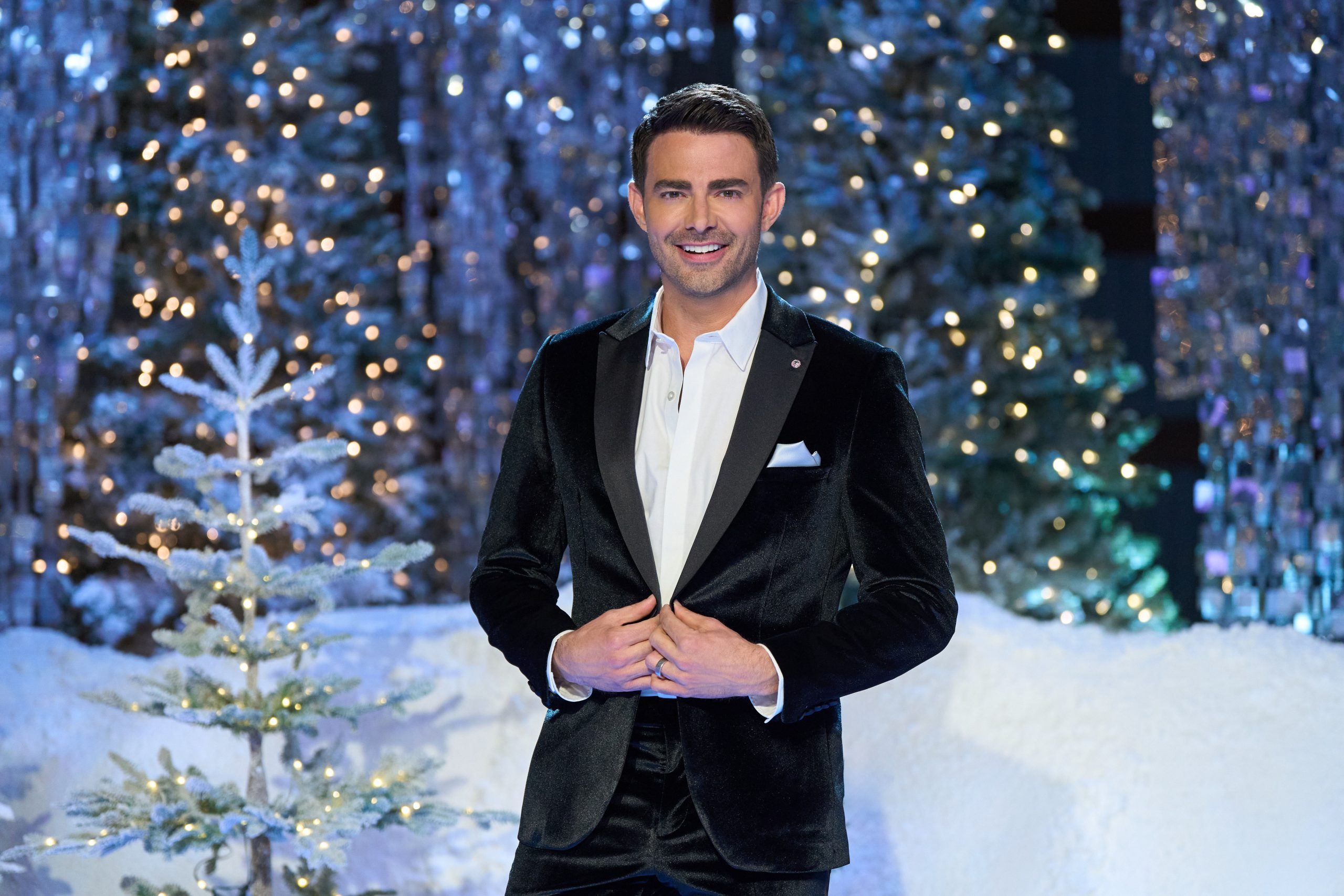
Jonathan Bennett believes there are two kinds of people in the world — those who love Hallmark movies and liars. And in Season 2 of Finding Mr. Christmas, which the Mean Girls star co-created with Ben Roy, Bennett is searching for Hallmark’s next leading man.
“It’s so fun for people because everyone in their life has someone they know that they think should be in Hallmark movies, right? The UPS driver, the barista at the coffee shop, the dentist,” Bennett says. “So we’re testing their acting abilities, we’re testing who they are, but we’re also looking for that star quality — the thing that makes them shine above everyone else. It’s almost something you can’t explain, but we know it when we see it.”
Season 2’s cast includes a former NFL player for the Green Bay Packers, a few actors, and a realtor. The 10 men compete in weekly festive-themed acting challenges, one of which included having to ride a horse and act out a scene with Alison Sweeney. The contestants were chosen from a crop of 360 potential men, and Bennett gives kudos to the show’s Emmy-nominated casting director, Lindsay Liles (The Bachelor, Bachelor in Paradise).
“She has a tough job because she has to find 10 guys that are going to be good reality television, but also have the talent to act, carry a scene, and lead a Hallmark movie eventually,” he says. To be the right fit for a Hallmark leading man, Bennett singles out five key characteristics: you have to be funny, charming, kind, have a sense of humor, and you have to do it all with a big heart.
Of course, Finding Mr. Christmas wouldn’t be Finding Mr. Christmas without its signature eye candy — something Bennett describes as “part of the job” for the contestants. “I can’t believe Hallmark let me get away with this. I dressed them as sexy reindeer and put them in harnesses attached to a cable 30 feet in the air, and they had to do a sexy reindeer photo shoot challenge,” he says with a laugh. “This season is just bigger and bolder than last. People are responding to not only all the craziness that we put them through, but also comparing and contrasting the guys in their acting scenes when we do them back-to-back.”
Season 1 winner Ezra Moreland’s career has been an early testament to the show’s success at finding rising talent. On seeing the show’s first winner flourish, Bennett says, “Now to watch him out in the world, just booking commercial after commercial and shining as an actor and a model, I think the show gave him the wings to do that. He learned so much about himself, and he took all that into his future auditions and casting. He just works nonstop. I’ve never seen an actor book more commercials and modeling gigs in my life.”
Bennett has been a star of plenty of Hallmark movies himself, including the GLAAD-award-winning The Groomsmen: Second Chances, which makes him a fitting host. Among those movies are 2020’s Christmas House, which featured the first same-sex kiss on the network and had a major impact on Bennett’s career as an openly gay man. “Hallmark’s been so great about supporting me in queer storytelling. But again, I don’t make gay movies for gay audiences. I make gay love stories for a broad audience, and that’s a huge difference, right? We’re not telling stories inside baseball that only the gay community will understand.”
He continues, “The backdrop of a Hallmark Christmas movie is very familiar to these people who watch. And so when you tell a gay love story, and you tell it no differently than a straight love story in that space, they’re able to understand. It’s able to change hearts and minds for people who might not have it in their lives.”
While Hallmark has become a major staple of Bennett’s career, he started off wanting to be a Broadway actor. And before the first season of Finding Mr. Christmas aired, Bennett took a break from TV to make his Broadway debut in Spamalot, replacing Michael Urie as Sir Robin and starring alongside Ethan Slater and Alex Brightman.
“That was my dream since I was five years old – then I booked a movie called Mean Girls, and everything kind of changes in your life. You no longer become a person pursuing Broadway, you become a part of pop culture,” Bennett recalls. “And to be honest, when I hit 40, I was like, ‘I’m probably never going to get to live that dream.’ And that’s okay, because I got to do other dreams and other things that were just as cool but different. So I honestly never thought it would happen.”
Bennett is still determined to make his way back on Broadway with the right role — he calls Spamalot the “best experience” of his life, after all — but he’s got another Hallmark show lined up with Murder Mystery House, which he co-created. The show was recently greenlit for development and intends to bring the Hallmark mystery movie to life. “It’s kind of like our version of The Traitors,” Bennett admits.
Looking back on both seasons, Bennett says that what makes Finding Mr. Christmas stand out in the overcrowded reality TV landscape is that everyone involved makes it with heart: “This isn’t a show where you’re going to watch people throw drinks in each other’s faces and get into big fights. The thing that has amazed me so much about this show, the more we’ve done it, is that every season, 10 guys come in as competitors, but they leave as a family and as brothers. That’s something you don’t get on any other network.”
Finding Mr. Christmas airs every Monday on Hallmark through December 20, with episodes available to stream on Hallmark+.
a&e features
Nia DaCosta and Tessa Thompson on the vital queer chaos of ‘Hedda’
The director and star of the sapphic thriller offer a new vision for what LGBTQ+ representation can be
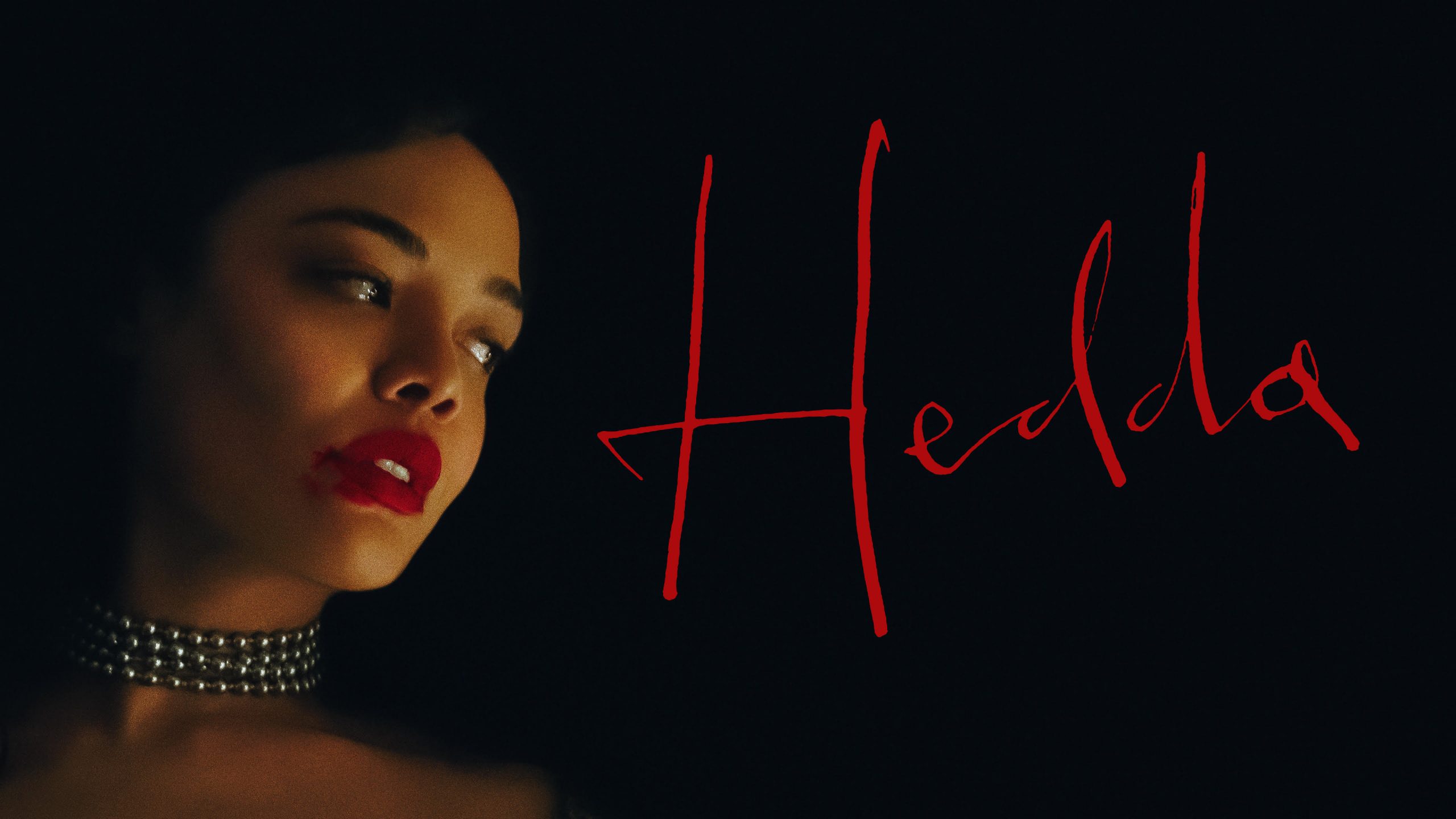
No matter how much hateful rhetoric tries to silence LGBTQ+ communities, queer people will always fight tirelessly to ensure our stories are told. This is shown prominently in film and television; modern viewers are lucky to have an ample library of queer media to choose from. That’s not to say there haven’t been serious losses in this area, with organizations like GLAAD documenting how the rise in hateful rhetoric has exacerbated existing attempts to ban these important pieces of media. But whether it be in the cinema or online, marginalized creators continue pushing to have their projects be created today — and absolutely none of these creations are as deliciously diabolical as Hedda.
An adaptation of Henrik Ibsen’s classic play, this story follows the titular housewife as she deftly manipulates anyone unfortunate enough to get caught in her orbit. Taking place over the course of a raucous house party, the 2025 version of this 1891 tale sees our ‘protagonist’ square off against 1800s gender norms, her inept husband, and the sudden re-emergence of her ex-girlfriend. Along with its jaw-dropping story of betrayal and intrigue, this complex adaptation seamlessly weaves various identities into a narrative that has been celebrated for more than 100 years. It effortlessly intertwines these historic themes with aspects of queerness and racism that audiences will know well, not only creating the best Hedda adaptation yet, but innovating what LGBTQ+ representation can look like today.
As someone renowned for injecting legendary franchises with much-needed nuance, Nia DaCosta knew how important it was to bring representation to Hedda — despite many people advising her against it. “[Speaking] as a Black woman, when you are not a white dude, your identity becomes a ‘complication,’” said the director, when discussing with the Blade what pushed her to translate this typically white, heterosexual character into a queer woman of color. “Something I get asked a lot is, ‘Oh, well Hedda is Black and queer — don’t you feel like that’s stacking too much on top of the film?’ And I respond, ‘Who you are is not too much.’”
It’s a sentiment that the film’s star, Tessa Thompson, completely resonated with. She shared with the Blade, “I think there is something so powerful about queerness [becoming] textural inside of a narrative,” raved the star, whose filmography is filled with projects like Dear White People and Passing that interrogate what true representation looks like in modern society. “Where we get to sort of normalize that and say this is a huge part of our identity, but it isn’t everything about us,” she continued. “Frankly, I wish that more filmmakers thought about that when they’re conceiving characters.”
It’s a conversation that has gone on for years among queer cinephiles: what is representation by and for LGBTQ+ audiences, and what is teaching non-queer viewers that gay people are also human beings? While it is (unfortunately) still essential for movies to perform this kind of education, it’s led to many projects offering a digestible image of queerness that doesn’t actually reflect the experiences of queer people watching. This kind of portrayal has led to studios utilizing diverse identities as gimmicks, ‘complications’ in the narrative that must be maneuvered around rather than vital aspects of nuanced characters. It’s a harmful trend of hollow representation, and it’s one that Hedda combats in every single scene.
“[Hedda is] canonical material that’s been celebrated for centuries,” Thompson explained. “Obviously, that wasn’t from a queer perspective, wasn’t from the perspective of folks of color…and I think, in a way, what we’re trying to say is that our stories also should be canonical.” By using a story that has existed for so long and effortlessly imbuing themes of queerness and racism into it, this creative team showcased how identity doesn’t have to simply be a narrative ‘hook.’ Rather, by recognizing that these significant identities contribute to the larger personality of a character, it adds impressive complexity to make the story even more entertaining to watch. Thompson’s character is a devilish (if not outright evil) anti-hero who champions her intersectional identities while not performatively explaining to audiences the anguish of being a queer Black woman in the 1800s. This allows her many intricacies to truly shine, with the film refusing to reduce Hedda to the discriminations these identities could solicit and instead using them to further flesh out an already intoxicating character.
Nia DaCosta is an expert at weaving diverse identities into stories not specifically focused on those identities (often to the outcry of conservative audiences). “You can’t think of identity as a complication,” she said, detailing how, whether it was Hedda or her foray into superhero cinema with The Marvels, she’s been alarmed at how reluctant so many filmmakers are to center marginalized identities in stories that aren’t about marginalized pain. “Don’t let anyone else tell you that it’s a complication or that it’s gonna make it too confusing or too complex. It’s not true, because we’re all valid, and we all deserve to be at the center of a story.”
By showing not only how easily such a classic tale can be revised with diverse themes but also how greatly improved it can be by them, DaCosta highlights how easily true representation can be accomplished today. Representation that doesn’t tokenize queer individuals or refuse to allow them outside of stories focused on the pains of being queer. Through her ideation and Thompson’s acting, she innovates cinema by offering a truly multi-dimensional portrayal of a queer person of color whose identity isn’t a complication or narrative tactic. And, when asked what she hopes for intersectional stories like this going forward, the Director ended the interview by saying plainly, “I want to see more of them.”
“There’s room for us in every kind of genre, every kind of storytelling. And we’re slowly cranking in that direction, but I think it’s a fight we have to keep having, and we have to keep being forceful about it, and we have to keep showing up in these spaces and planting our feet. That’s what I hope to see more people [doing]…coming in and planting their feet.”
a&e features
Jason Caceres is the rising talent you can’t look away from – not that you’d want to
With three OUTtv series, festival awards, and charismatic energy, Caceres is becoming one of queer media’s most versatile characters
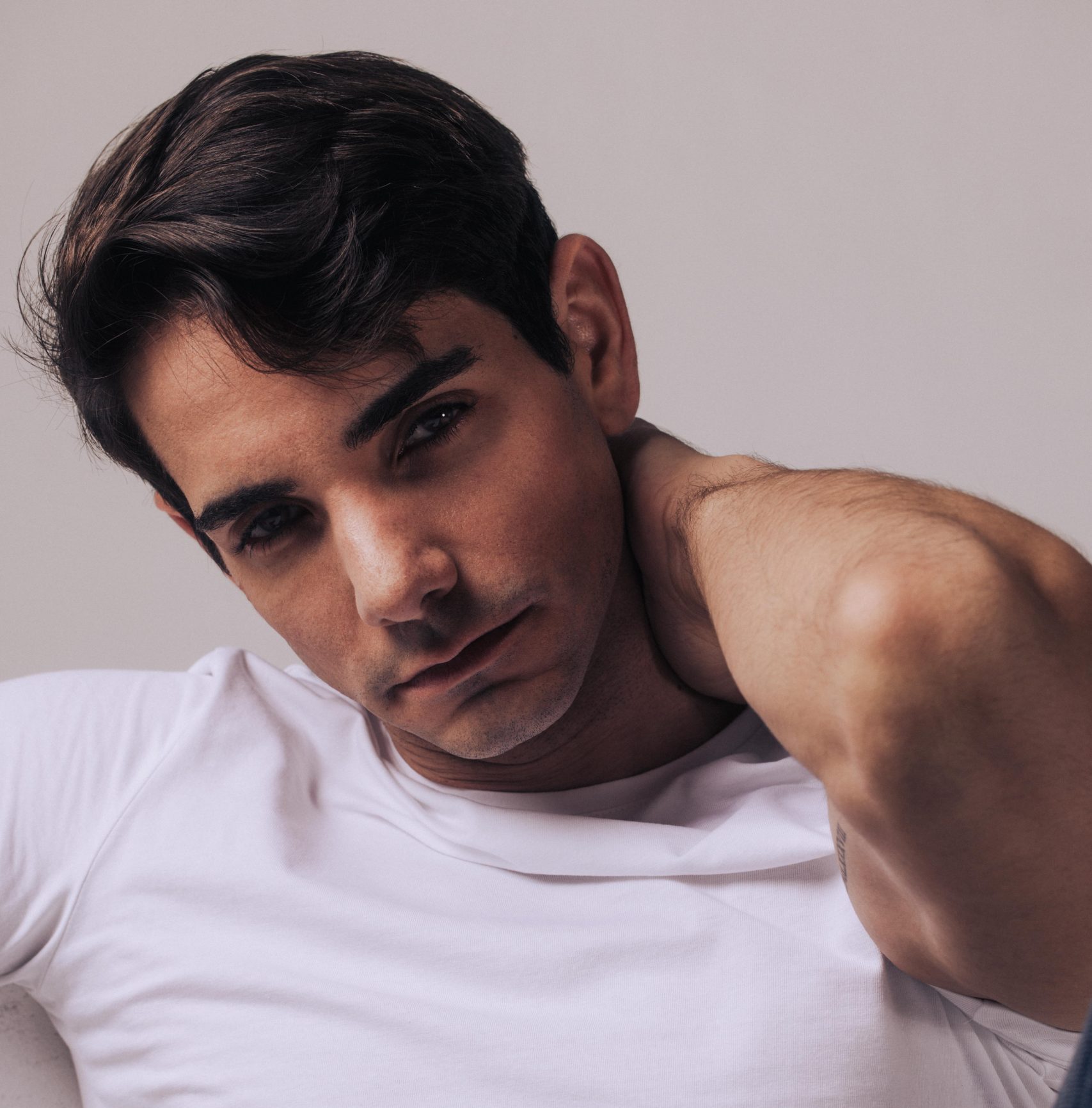
For actor Jason Caceres, the past few years have marked an intentional rise – one defined by a commitment to queer storytelling, a love of comedy, and a layered understanding of what representation in media means. With roles across multiple OUTtv series, including Boy Culture: Generation X, Open To It, and the upcoming Laid Bare, Caceres has become one of the network’s most recognizable and versatile emerging voices. He’s the kind of actor who can get a laugh with nothing more than an eye-roll, a perfectly timed one-liner, or a hair color choice that probably deserves its own content advisory.
Born and raised in Miami to Cuban immigrant parents, Caceres grew up straddling two cultural worlds. This duality informs the emotional sensitivity he brings to his characters. “At home, I spoke Spanish, watched Telenovelas, ate croquettas and bocaditos,” he explains. “At school, I spoke English and ate mashed potatoes and mac and cheese. It helped broaden my horizons…”
To have grown up at this intersection, he says, is precisely what allows him to tap into a range of emotional registers on screen. “It’s given me a sense of empathy that I’m not sure I would’ve had otherwise.” That empathy is evident across his work, whether he’s leaning into camp absurdity or finding solitude in the quieter, more vulnerable scenes.
Caceres’s visibility extends well beyond television. He’s quickly becoming a fixture on the festival circuit, most notably at Cinema Diverse, the Palm Springs LGBTQ+ Film Festival, where he appeared in five programs this past year – an impressive feat even for longtime regulars. “As an openly queer artist, it’s always heartwarming to be received so well by my own community,” he tells the Blade. His long-standing relationship with the festival reflects not only local enthusiasm but also the deep resonance of his work with queer audiences seeking media that affirms their personal experiences and stories.
Still, it’s his turn as Princeton Martinez on Open To It that has captured the widest attention. Caceres’s portrayal is sassy and chaotic, yet he still manages to pull the character into unexpectedly vulnerable territory – a balance he intentionally cultivated when returning for Season 2. “Princeton has seen a lot of growth since the first season,” he says. “Season 2 sees Princeton struggle to grow into himself. We see heartbreak, we see insecurity, we see doubt, and we see love.”
One of the season’s most striking moments mirrored a moment from Caceres’s own life. “[Princeton’s] letting his guard down and, for the first time probably in his entire life, admits that he wants someone to love him the way Greg and Cam love each other,” Caceres recalls. The emotional truth of the scene surprised even him. “It struck me in a way I was not expecting … Right as Frank yelled ‘cut!’ I started bawling like crazy. It was definitely an ‘art imitates life’ moment for me.”
Yet the versatility of Caceres is what truly defines both him and his growing career. As he tells the Blade, “At the end of the day, [Open To It] is a sex comedy that is meant to make you giggle.” He talks about the show with a mix of humor and self-awareness, fully conscious of the role he plays and the space the series occupies in queer culture. At the same time, he remains humble and genuinely grateful for his opportunities. He is quick to credit the queer creators who shaped his own awakening, including Boy Culture and director Allan Brocka. Now, with three OUTtv series to his name and Laid Bare, a queer Agatha Christie-style murder mystery, on the horizon, Caceres has become part of that creative lineage himself. “When I moved to Los Angeles to pursue acting, I knew I wanted to lend my voice to the LGBTQ+ community,” he says. “I was starving for stories and characters that were like me.”
What unites his varied roles is a throughline of joy – a willingness to portray queer characters as messy, hilarious, emotional, desired, and flawed. Caceres is bold, sexy, eclectic, and entirely his own. He is a rising talent whose presence signals exactly where queer storytelling is headed next.
a&e features
‘Suffs’ star Gwynne Wood wants us to continue to find hope
What a musical about the suffragette movement can teach us about fighting for LGBTQ Rights
Saying there’s a lot of anxiety in the queer community right now is an understatement. With the overwhelming shadow of politicians threatening to take away our rights, it is now more important than ever to try to find hope and not let fear control us. That’s what Suffs the musical aims to teach us how to do.
Gwynne Wood, who plays Lucy Burns, the co-founder of the National Women’s Party, sat down with the Blade to share what she’s learned from being in the musical.
“Lucy never conforms to what other people want her to be. She has this sense of humor that she uses to bring the group together, even in times of intense hardship. I think that playing her, like I would like to be, like that. I always want to bring humor and heart to these times that we’re living in.”
The suffragettes went through an instrumental amount of tribulation to get the right to vote, including going on a hunger strike and being called insane. Yet, they were still able to remain unwavering in their mission to get the 19th Amendment passed.
Even though there has been progress made since then, in many ways, we’re still fighting for our basic rights to be respected. Many states are trying to prevent LGBTQ people from being visible in classrooms through implementing book bans or just outright telling teachers they’ll be fired if they bring up LGBTQ people.
Even though the Supreme Court decided that it was not going to take up the Kim Davis case, which would have upended gay marriage, it felt disheartening to many that it was even a debate in the first place.
However, if there is one thing that Suffragettes can teach us, it is that we have the right to push back against these policies.
“As much as this administration wants to squash what feels like any sense of hope that we have. It’s our right to dissent. Things have been terrible before, but they pushed through. Our ancestors have done so much for us, and it’s our duty to them to fight back. “
Gwynne also felt the uncertainty around the Kim Davis case, as they recently got engaged. Despite that unease, they believe it’s essential to remember that fear should not prevent people from living their lives.
“We weren’t sure what was going to happen, but I think that I want people to know that even as we were getting inundated with scary things coming from our government, it shouldn’t stop us from living our lives to the fullest, and I think that Suffs has helped me to fully embrace that.”
The women of the suffragette movement are a perfect example of not letting fear get in the way of controlling our lives. One way that the real-life Lucy Burns and Alice Paul did this was by creating a sense of found family through living together, in addition to creating a safe space for women to come together to fight against oppression.
One way that the cast has come together to create that sense of camaraderie is through dressing up as different Scooby-Doo characters for Halloween.
“The dynamic between all of us as actors is so special. It honestly makes it easy to have chemistry with the folks I’m with every night because the show is about the relationships between these women. It makes it a lot easier and so much fun.”
Suffs runs at the Hollywood Pantages Theatre from November 18th to December 7th.
a&e features
The Ultimatum: Queer Love’s “villain” Vanessa Papa is rebuilding comfort in queer spaces
Papa will host the next Lez Brunch on Saturday, Nov. 22nd where the theme is chosen family and friendships.
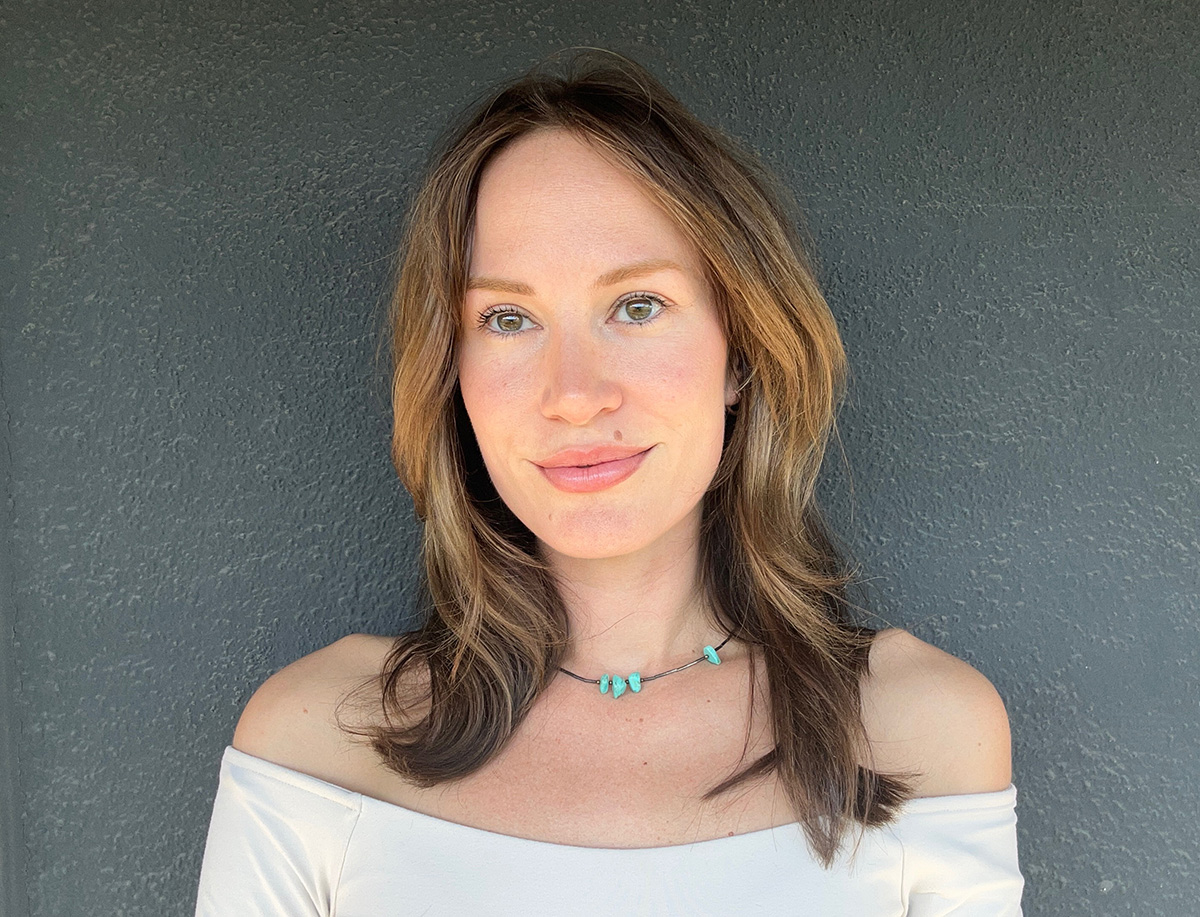
In the spring of 2023, I was finally feeling comfortable identifying as queer. It wasn’t a big revelation so much as a gentle realization that unraveled from a period of intentional time growing my friendships with other queer people.
At that point, I shared a home with a motley of queer artists I cherished: Hanne, Romeo, Oliver, and Ava. We passed snacks to each other from an open kitchen window that led to a patio table where we shared mugs of tea and mini potluck dinners. We read books and talked about old crushes and new ones on the horizon. We made art messily and laughed loudly.
On one rainy night, we cozied up on the couch to watch the sappy sapphic romcom, Imagine Me and You. On another, we projected an episode of The Ultimatum: Queer Love in our living room, gasping and conversing the whole time. I remember scouring internet forums about the show episode after episode, and seeing one of its participants in particular receive consistent waves of backlash from viewers: Vanessa Papa.
Papa was a contentious and oft-discussed character from the series’s eventful run, both in and out of the show. Other participants found her attitude and behavior distasteful and did not shy away from voicing this to her. Viewers lambasted her seemingly flippant attitude towards her partner and the show’s premise. As I prepare to speak with Papa, I keep thinking: what kind of impact does this magnitude of public criticism have on someone’s perception of themself and the world around them? How does she interact with queer spaces today, after being deemed one of the show’s undisputed “villains”?
Papa is the host for the next Lez Brunch this Saturday, where the theme is chosen family and friendships. How has she reclaimed queer acceptance and friendship in her life when she spent the period after the show’s airing hiding, afraid of the “aggression” she was starting to face in her day-to-day life? The Blade sat down with Papa to discuss the impact of being on reality TV as a queer person, how that’s affected how she interacts with queer spaces, and how she approaches maintaining a tight, core chosen family amidst a difficult period of self-doubt that followed the release of the first LGBTQ+ edition of Netflix’s “The Ultimatum.”
Since the show has aired, I’m wondering if the criticism and negativity you received in response still lingers on at all, or if it’s affected the way that you navigate your identity as a queer person?
I think what I encountered very quickly was that the majority of people who were cast were there to put their best foot forward in terms of the public eye. And I didn’t come on like that. I just came on to the show to be my true self, whether I was angry at the time, or sad, or whatever it was. I was just going to be genuinely me. And obviously, when you do something like that, it’s really easy to edit and pick apart the person way more if they’re not putting on a constant mature and happy and calm face, which a lot of them did. I think I understood very early on how I would be edited, but it wasn’t going to change me being me, and it was really hard when the show came out, which was about two years after we filmed.
Basically, my whole life had changed [after] we finished filming, and then before the show came out. I had taken time to travel the world. I got a nose job. I moved to Los Angeles. I was starting a new relationship, and then the show came out, and it was just like: number one, I was in the public eye in a way I’d never been before. And number two, I was so villainized and picked on by the queer community. And number three, I saw things happen in the show that my previous partner had not made me aware of. So it was just a lot of trauma to come on all at once while I was just feeling like I was reestablishing my life without that relationship.
When the show first came out, people were actually aggressive towards me when they would meet me in public. I remember distinctly someone asking me for a picture. They put their arm around me, and while they’re taking the picture, they said, “I fucking hate you.” Moments like that happened constantly for months after the show came out. So I just kind of hid away because people were so cruel. Now, luckily, years later, it’s calmed down.
People tend to have this idea of who I am. It’s really hard to grasp that as the human who went through the experience to have to say: Okay, Vanessa, people who watch the show don’t know what you know, and there’s no way you can fully explain it to them. And you just have to accept that. I used to love being out and open and going to all the queer parties, and then the show came out, and now I have just so much more of a hesitation to be in queer spaces. It’s really upsetting to me, but I’m slowly getting back out there and finding that as the time has progressed, people are softer in terms of thinking they know who I am.
Does that hesitation linger in other aspects of your life and are there certain spaces you just feel more comfortable in now?
I think I feel a lot stronger in just who I am now, so I’m no longer really afraid to go into queer spaces. And if someone were to be unkind to me, I’m just very ready to say, “Okay, I’m gonna walk away now.” I feel like I finally have that bravery, and I’m not just trying to continue to be kind to someone who’s being unkind to me. But in terms of wondering if people are just trying to get to know me or be my friend or get a picture with me because I was in the show, that feeling still lingers. I actually was dating someone for about three years, and that was amazing, and I love her, but we are no longer together.
With that being said, I’m single, and I just have no desire to date, because I cannot imagine going out into the queer world in LA and meeting someone and having in the back of my mind: are they really only on this date because they saw me on the show, or do they think I’m the person from the show? Because the way I was put out there is not really me. I have so much hesitation to get to know someone intimately [since] the show came out, and that’s only something I’ve had to really think about the past few months after my breakup.
I had this person who knew me before the show came out. She obviously wasn’t dating me because I was on a reality show. She had no idea when we started to date. And I look back and I’m like: wow, I got really lucky with that, but I’ll never have that again. Now, I’ll always probably have in the back of my mind: Do you want to date me, actually? Or do you want to date the person whom you saw on the show? Because you can say, “I’m dating the villain from the Queer Ultimatum.”
Did you watch the show with the person you dated after filming had long wrapped? Were you hesitant or anxious to be like: I don’t know how this person I love is going to see me depicted on TV — this almost disembodied version of you?
When I started to date my ex, I had to tell her: I’m going to be on a reality show with my ex. What a terrible thing to tell someone that you’re falling in love with. Number one, I’m going to be a public figure. And number two, you’re gonna have to watch a TV show of me making out with my ex. Crazy. She ended up watching it on her own, so I didn’t get to have the experience with her that I wanted to.
What I can say is, with my family and my friends and people who know me, when they watch the show: they see me. No matter how edited it is and spliced together, they know me. They know my humor. They know my reactions. They know everything. So they are all able to watch it and just laugh at it. But that’s clearly not how the public perceived it.
It was probably very hard for her to watch it, but I think she knew who I was at that point. We had been together for over a year.
It was hard for her to watch it. Was it hard for you to watch it?
Oh, my god, yes. I kept a diary every single day that we were there, because I didn’t want my own reality to get messed up. I would write down who I talked to, what our conversations were. So watching the show, I wanted to scream. “This is not what we were talking about. This is not what happened!” But then I just realized that’s what I signed up for, and I had no real perception of [being on] reality TV before, and I just had to accept it.
I watched the show with two of my best friends, Jordan and Kim, and it was just crazy how often I was pausing it and saying, “Okay, so this is what really happened,” and giving them the rundown. In that moment, I was like, “What the fuck is this?” But then also had to accept there’s no way to change it. I just knew that’s what it was, and I needed to accept it. Whatever you say to add to the conversation, whether you think you’re clarifying something, if they don’t like you and they’re dead set on disliking you, they will use any more information to just compile it somehow.
So I just stayed quiet and didn’t defend myself when my other cast members were coming out and making TikToks about me. People that I love, people I had no beef with, were still leaning into the villainhood of me because it made their social media blow up. And I just stayed silent because I knew there was nothing that I could do at that point to change people’s minds. Because they love a villain, and they had a villain in me.
Do you regret the experience?
It was the worst time of my life. I truly mean that [and] I hope that that remains the worst part of my life. I don’t regret it, because that was the reason that that relationship ended for me, and I genuinely don’t think it ever would have ended without that. That was something that I never would have had the strength to do. It was good for me in that way, but the experience was really a low point. I’m happy it’s in the past.
In this current period of time in your life, what’s keeping you passionate and happy? With the upcoming Lez Brunch theme being chosen family and friendships, how are you leaning into those relationships now?
The past few months are my first months being single, and so I’ve had a lot of time to spend with my friends — which has been so nice. I’ve missed relying on my friends for social situations, because I used to rely so heavily on my partner. It’s been really nice to have free time all the time. When my friends ask me to hang out, I can almost always say yes. And I’ve been doing a lot of reading. I’ve been painting little canvases that I’m going to put on my walls to decorate my apartment. I’ve been doing a lot of karaoke nights.
I’ve been really focusing on acting and honing in on that craft and really applying to projects and finding a new manager and just really setting myself up for success in the acting world. I just want to keep that momentum going. I’m really happy with where I am right now with that.
[With] Lez Brunch, I think there is such a different atmosphere surrounding that, because it’s not: come out late at night when you’re drunk and let’s party — which is pretty much all of the events other than Lez Brunch that I go to or host. It’s more of a hangout experience versus a nighttime event.
[When it comes to chosen family] I have so much empathy for people who are just trying to love the way they want to love, and because of that, they’ve experienced rejection by people who used to love them until they knew this one thing about them. It’s not a bad thing. It’s not a dangerous thing. It’s simply: I might love someone of the same gender.
So I love situations in queer communities where we’re boldly saying: If you can’t have your blood family, you can have your chosen family. We’re all here to support you and make you feel loved. And I feel like that’s what the theme of this Lez Brunch is. We are your chosen family. So come hang out and celebrate, and let’s all outpour love on each other.
Come join The Blade and Vanessa at Lez Brunch:
📅 Saturday, November 22 · 12PM–4PM (or as late as we want!)
📍 Blue Birdy
8917 Sunset Blvd, West Hollywood, CA 90069
Next to the world-famous Whisky A Go Go on the Sunset Strip
a&e features
How Dropout is changing LA’s entertainment industry
While other production companies are rolling back on representation, this LA-based studio is making the queerest content you’ve ever seen.
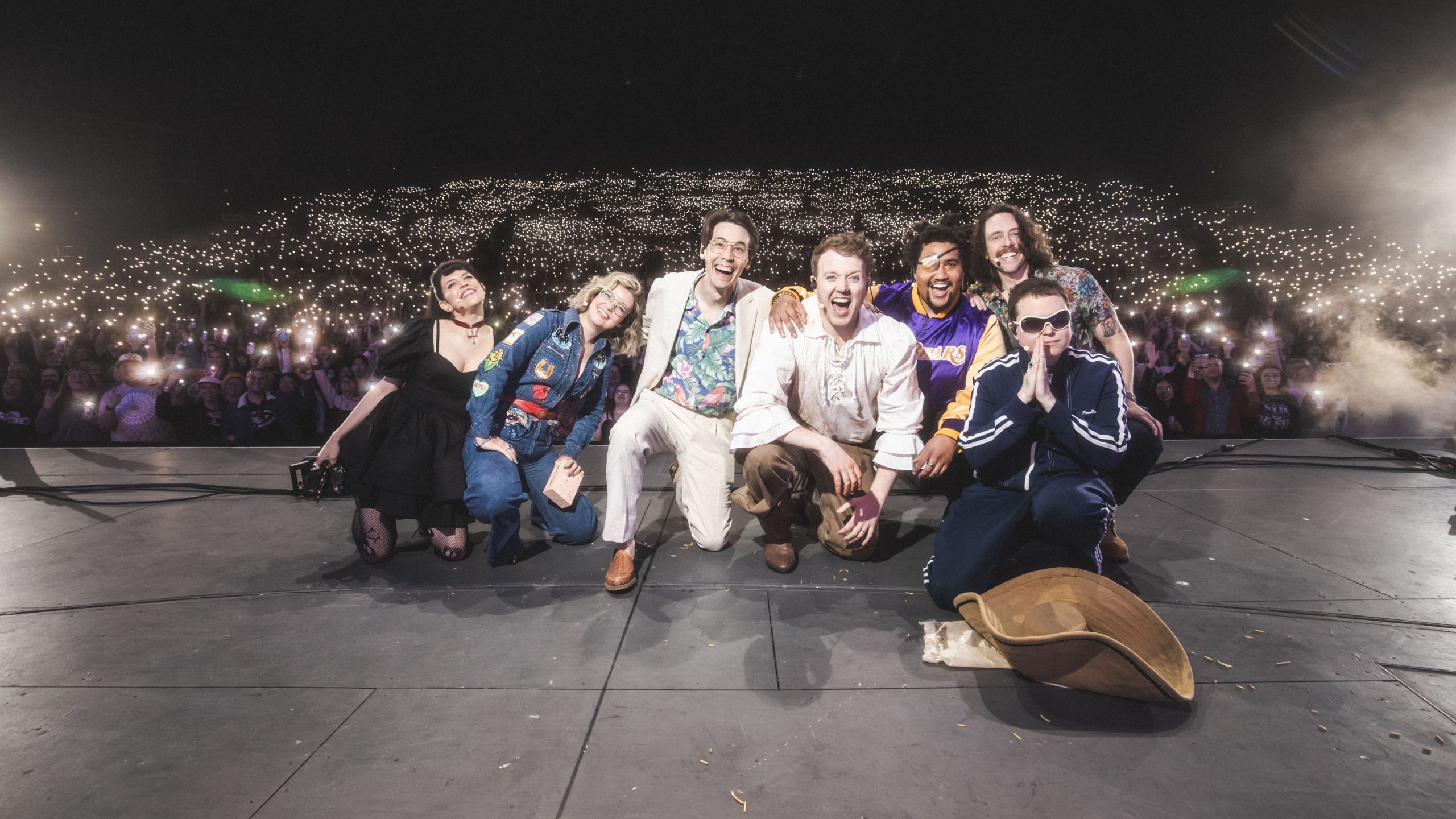
It’s well-known that the portrayal of queer people in the media directly impacts their treatment in society. Whether it be gay relationships in sitcoms or trans people in film, viewers take lessons from these projects into how they treat these identities in real life. It’s why onscreen representation is essential, and why the entertainment industry’s long-documented discrimination towards LGBTQ+ performers is so unfortunate. In a city like Los Angeles filled with marginalized actors, it’s particularly devastating to see companies reinforce the unfair barriers that have always harmed our communities…and it’s why LA-based production company Dropout is more important now than ever.
Founded in 2018, Dropout has steadily become one of the biggest streaming services today. An evolution of the YouTube channel CollegeHumor, it’s made waves with inventive programming and an innovative approach to production — all while constantly spotlighting the best LGBTQ+ performers this city has to offer. The Los Angeles Blade sat down with CEO Sam Reich and performer Ally Beardsley to discuss how Dropout rose to become one of the most consistent sources of queer media. They broke down the many ways it not only platforms marginalized identities but nourishes up-and-coming performers, highlighting just how easily companies (and LA’s entertainment industry as a whole) can cultivate a culture based as much on creating great content as it is on inclusive respect.
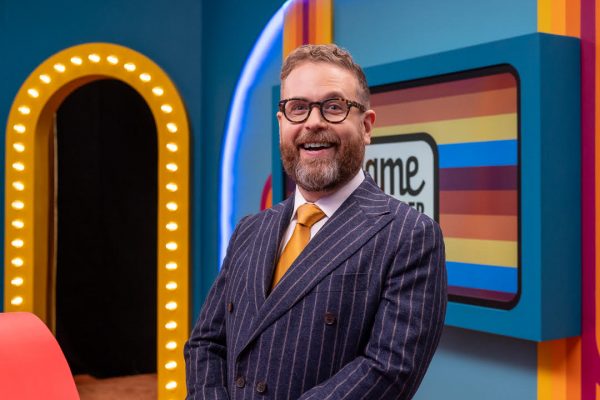
When asked what it’s like working as an actor in LA, Sam Reich summarized the experience with three words: “It’s absolutely brutal.” And he would know better than your average CEO; before rising as the head of Dropout, Sam spent many years as an aspiring actor in both Los Angeles and New York. “This industry…it’s not only an industry with gatekeepers, but [one] of people who make their money gatekeeping.” He detailed the toxic casting practices that all performers face and the uniquely unfair ways that companies make it hard for new actors to find success. As productions primarily focus on multimillion dollar projects, these companies are unwilling to spare funds for new voices — voices that overwhelmingly belong to LGBTQ+ and POC creatives. This has created a bleak environment for these hopeful performers, one that Ally Beardsley knows well…or, at least, they did before Dropout.
“What I feel is absolutely not what other people are feeling,” said Ally, a nonbinary comedian who’s been a regular on Dropout for almost a decade. They described the grueling difficulties of trying to make it as an actor, ones that are intricately more difficult for LGBTQ+ performers who can find their identities disrespected at every step of the creative process. And then, they spoke on how they’ve largely evaded that treatment for years by being a part of Dropout, comically claiming that they feel, “Hashtag Blessed,” to be a regular with the company.
It’s an issue that has intensified in recent months, as a rise in conservative rhetoric has led to many companies going back on the commitments to DEI that they made in recent years. As shown in GLAAD’s Annual Studio Responsibility Index, this has led to a huge lull in inclusion as queer-centric shows continue to be cancelled while even more fail to create characters that mirror this diverse community. This has highlighted an alarming lack of representation in the media — a problem that Dropout has never had to deal with.
Whether it’s the constantly evolving Game Changer or hilariously informative Smartypants, Dropout’s many shows almost always feature openly LGBTQ+ performers in their casts. And this goes beyond just contestants; with famous Drag Queen Monét X Change and renowned comedians Vic Michaelis, Jordyn Myrick, and Mano Agapion, the streaming service makes history by having multiple programs hosted by openly queer artists. When asked how Dropout set such a high bar for inclusion, Sam Reich clarified, “It’s not that we are setting a high bar for inclusivity — I think that, in general, the bar is low for decency.”
“Are we being inclusive, or are we just not being exclusive?” The CEO went on. “We are trying to make the best comedy in LA, and a lot of the best comedians are queer and POC…so if we are being true to our goal, we are hiring them!” He described how the company actively creates an affirming workplace for these performers, not only recognizing their diverse identities but also the universal plight of being an actor today. “There are so many people who want to do this for a living that it’s easy to be taken advantage of,” he continued, going on to discuss how all creatives who come to Dropout with auditions or pitches are compensated — whether they’re cast or not. “We really try to discourage free work as much as possible.”
This is an almost unheard-of practice in LA, and it’s only a small part of the affirming environment that Ally has seen develop over their years with Dropout. “When a new person who just happens to be diverse shows up…everybody really has their back. And I think that’s so important, because when you have representation without support, you’re just leaving that person out to [fail].” Ally happily attested this culture to Sam’s actions as a CEO, ones that range from capping his own salary to secure fair pay for workers to ensuring that people’s pronouns are prominently listed on every call sheet to avoid misgendering.
These were accolades that the self-described “relatively straight white man” humbly refuted, saying that he cannot take sole credit for Dropout’s inclusivity. But as the interview wound down, he did express his hopes for a better entertainment industry in not only LA, but the entire country. From government funding for art programs to productions being open to new voices, he envisions a media where historically underserved performers are given the resources they deserve. And, when asked about his thoughts on the dismal rates of inclusion we’ve been seeing from other companies and streaming services, Sam had this to say.
“When Trump got re-elected, I think that a lot of Hollywood thought that ‘regressive content’ would be [popular], and I fundamentally don’t think that’s true. Dropout’s success is evidence of that.” After taking a moment, he continued, “The point of art is to connect us to our fellow human beings. And if you don’t have stories that come from a [wide] range of human experience, you’re just not fulfilling the purpose of art like that…and then why are any of us doing this at all?”
It’s a sentiment that all of LA’s entertainment industry could benefit from. And it’s one that Sam and Ally hope to spread across the city — one paid audition at a time.
-
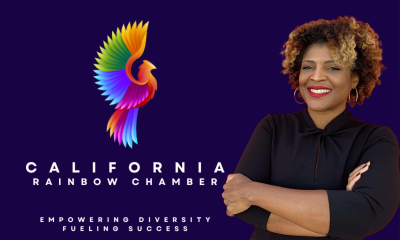
 Business2 days ago
Business2 days agoLos Angeles Blade partners with the California LGBTQ Chamber of Commerce for 2026
-
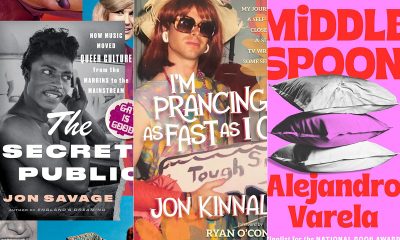
 Books4 days ago
Books4 days agoThe best books to give this holiday season
-

 Religion & Faith2 days ago
Religion & Faith2 days agoComing home to myself this Hanukkah in West Hollywood
-
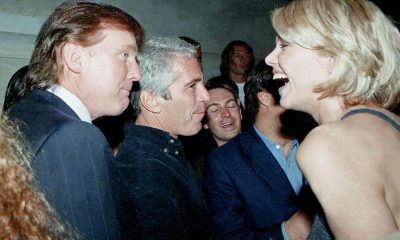
 National18 hours ago
National18 hours agoAs house Democrats release Epstein photos, Garcia continues to demand DOJ transparency
-
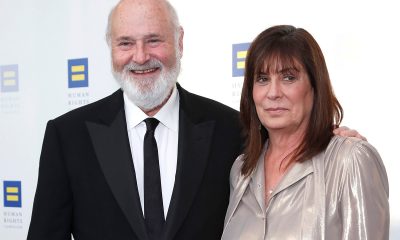
 Celebrity News3 days ago
Celebrity News3 days agoRob Reiner, ‘The Princess Bride’ director and outspoken LGBTQ+ ally, dies at 78
-
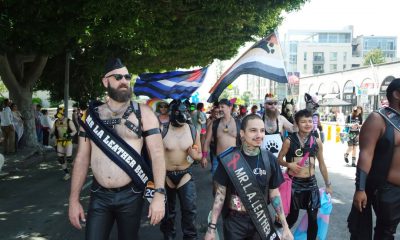
 Leather community3 days ago
Leather community3 days agoLegacy never looked so good: LA Leather Pride’s George Vasser talks titleholders past, present, and future
-
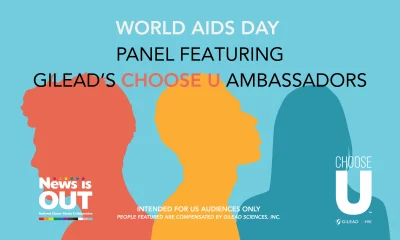
 Health5 days ago
Health5 days agoChoose U ambassadors share lived experiences with HIV, personal reflections, and insights
-
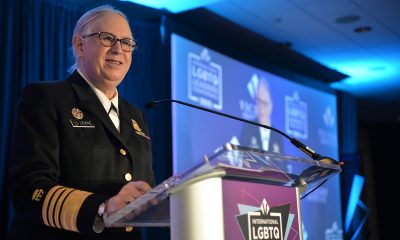
 National19 hours ago
National19 hours agoWhite House deadnames highest-ranking transgender official
-
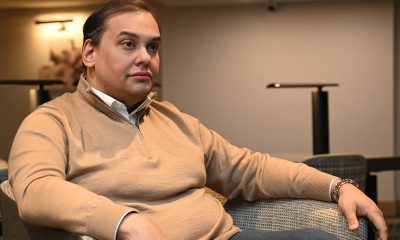
 Politics19 hours ago
Politics19 hours agoGeorge Santos speaks out on prison, Trump pardon, and more
-
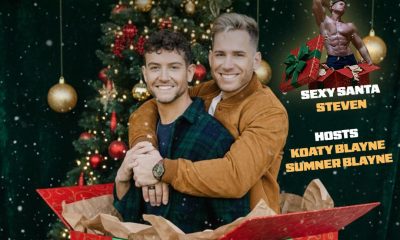
 Events1 day ago
Events1 day agoLos Angeles Blade and matchmaker Daniel Cooley present a free gay holiday singles mixer
